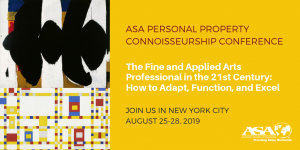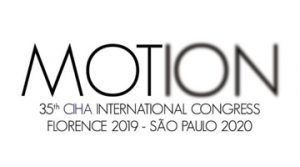CAA News Today
The CAA-Getty International Program: Looking Forward, Looking Back
posted by CAA — Aug 01, 2019
This article was written by Janet Landay, project director of the CAA-Getty International Program since its inception.
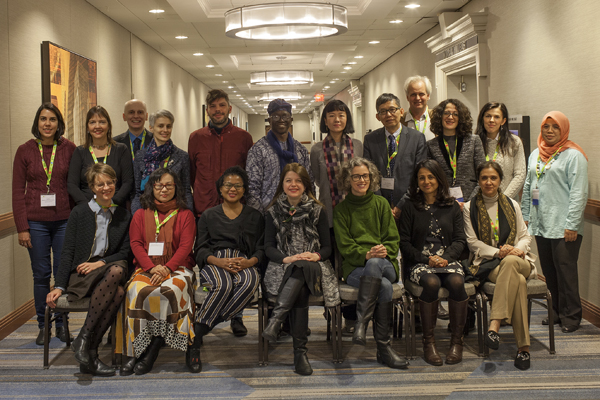
2019 participants in the CAA-Getty International Program, photographed at the Annual Conference in New York. Photo by Ben Fractenberg
This is open season for the CAA-Getty International Program; that is, we’re accepting applications from international scholars between now and August 23rd to participate in next year’s program at the Annual Conference in Chicago. This will be the ninth year of the program and we’re looking for academics, curators, or artists who teach art history from countries not well represented in CAA’s membership (primarily non-Western countries from the global south, all parts of Asia, and Eastern Europe). Specifically, we want to bring scholars who are advancing our understanding of the visual arts, be it through art history, visual studies, or any number of intersecting disciplines, such as aesthetics, history, post-colonial studies, gender studies, cultural heritage research, etc. The range of topics addressed by participants since the program began nine years ago is remarkable, as exemplified in last year’s programs included at the end of this article.
The mission of the CAA-Getty International Program is to bring new voices to the CAA community to enrich the conversation about globalization and inclusion in visual arts scholarship. Since it began in 2012, the program has brought 120 scholars from 46 countries to its conferences, including representatives from Argentina, Albania, Bangladesh, Benin, Brazil, Bulgaria, Burkina Faso, Cameroon, Chile, China, Croatia, Cuba, Czech Republic, Ecuador, Egypt, Estonia, Ghana, Greece, Haiti, Hungary, Iceland, India, Iran, Iraq, Lebanon, Malaysia, Mexico, New Zealand, Nigeria, Pakistan, Peru, Poland, Portugal, Romania, Russia, Serbia, Slovakia, South Africa, South Korea, Sri Lanka, Taiwan, Thailand, Turkey, Uganda, Ukraine, and Vietnam. Many of these scholars have returned to CAA conferences as speakers, session chairs, and members of CAA’s International Committee. They have also contributed articles to CAA’s publications and collaborated with scholars in the United States that they met while attending a conference.
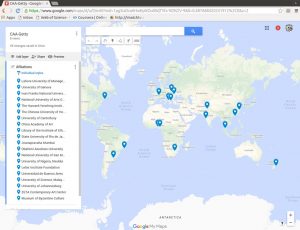
Map showing home countries of 2019 CAA-Getty International Program participants. Map provided by Nazar Kozak.
Each year, US-based CAA members serve as hosts to the international scholars, introducing them to colleagues, guiding them through the conference’s vast array of sessions and programs, and frequently taking them to museums and collections in town. To date, over 60 CAA members have participated in the program, supported with honoraria from the National Committee for the History of Art.
In 2020, we will bring fifteen new scholars and five alumni to the Chicago conference. Please help us spread the word of this grant opportunity to colleagues or institutions in the regions mentioned above by sharing this link to the program’s description and application.
And if you would like to participate as a host, send me an email at jlanday@collegeart.org.
What follows is the program for two key events from the 2019 CAA-Getty International Program: a preconference colloquium on February 12th on international issues in art history at which twenty scholars participated, and an alumni conference session on February 14th that featured five CAA-Getty alumni. Included below is the program for the February 12th colloquium, followed by the abstracts for the February 14th alumni conference session.
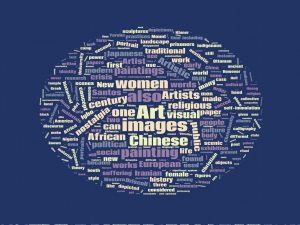
Word cloud showing most frequently used words in the 2019 Preconference Colloquium of the CAA-Getty International Program. Illustration provided by Nazar Kozak.
PROGRAM
GLOBAL CONVERSATIONS 2019
PRECONFERENCE COLLOQUIUM
Tuesday, February 12, 2019
Starr Foundation Hall, Parsons School of Design
8:30 AM Coffee, welcome, and introductions
9:15 AM Examples of Defining or Constructing Aesthetics in Chinese and Japanese Art
Chair: Chen Liu, Harvard-Yenching Institute, Harvard University, 2018-19
The Making of Scenic Sites: Landscape Painting, Tourism and Nationalism in Republican China
Pedith Chan, Chinese University of Hong Kong
Art by Japanese Prisoners in New Zealand during WWII
Richard Bullen, University of Canterbury, New Zealand
Lucy Driscoll and Developing a Theory of Chinese Painting
Jian Zhang, China Academy of Art, Hangzhou
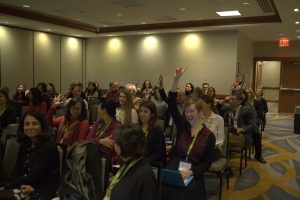
CAA-Getty International Program preconference colloquium, February 12, 2019. Photo by Ben Fractenberg
10:30 AM Orientalism/Occidentalism
Chair: Nadhra Khan, Lahore University of Management Sciences, Pakistan
From Occidentalism to an Occidentalizing Art: An Iranian Gaze to the Occident
Negar Habibi, University of Geneva, Switzerland
Deconstructing Imperialism: The Intersection of Religion, Politics, and Design in the Iconography of a Christian Saint
Halyna Kohut, Ivan Franko National University of Lviv, Ukraine
Orientalism and Female Portraiture in Nineteenth-Century Painting in Romania
Oana Maria Nicuță Nae, George Enescu National University of Arts, Iasi, Romania
11:45 AM How Do We Approach Religious Art?
Chair: Nazar Kozak, Department of Art Studies, Ethnology Institute, National Academy of Sciences of Ukraine
The Last Judgment in Spanish America as Social Rhetoric of Salvation and Damnation
Tamara Quírico, State University of Rio de Janeiro, Brazil
Dancers, Musicians, Brahmins and Ṛṣis: Understanding the Temple Worship of the Pāśupata sect in Angkor, Cambodia
Swati Chemburkar, Southeast Asian Art and Architecture, Jnanapravaha, Mumbai, India
You Cannot See It: Access to Religious Artistic Materials
Stephen Fọlárànmí, Ọbáfémi Awólọ́wọ̀ University, Ilé-Ifè, Nigeria
1:00 PM Lunch
2:30 PM The Body, Identity, and Artistic Agency
Chair: Katarzyna Cytlak, Center for Slavic and Chinese Studies, University of San Martín, Argentina
Shifting Female Identity: Female Cross-dressing in Southeast Nigeria
Chukwuemeka Nwigwe, University of Nigeria, Nsukka
Challenging the “Unconscious”: Agnaldo Manoel dos Santos and the Revision of Afro-Brazilian Art
Juliana Ribeiro da Silva Bevilacqua, University of Campinas (Unicamp), Brazil
The Reinvention of the Body in Volatile Times: Political and Artistic Intersections between Buenos Aires and New York in the 1980s
Viviana Usubiaga, National Scientific and Technical Research Council (CONICET), University of San Martín/University of Buenos Aires, Argentina
3:45 PM Politics and Art in Dark Times
Chair: Sarena Abdullah, School of the Arts, Universiti Sains Malaysia, Penang
A Flame For Freedom
Marko Stamenkovic, ZETA Contemporary Art Center, Tirana, Albania
Sanitizing Memory through Erasure: Post-apartheid Nostalgia in Contemporary Visual Art Practice
Zamansele Nsele, University of Johannesburg, South Africa
The Crisis Displayed: Greece’s Participation at the Venice Art Biennale
Iro Katsaridou, Museum of Byzantine Culture, Thessaloniki, Greece
5:00 PM Wine Reception
GLOBAL CONVERSATIONS 2019
ALUMNI CONFERENCE SESSION
ABSTRACTS
Thursday, February 14, 2019
Creative Pedagogy: Mapping In-between Spaces Across Cultures
Nazar Kozak (Chair), National Academy of Sciences of Ukraine
Art-historical curricula tend to provide imaginary “racks” on which each artwork could be assigned to chronological and geopolitical shelves. In practice, however, such systems has difficulties in accommodating phenomena that fall in-between proposed categorizations. Their presence in art-historical classrooms corresponds to cosmology ‘s Dark matter: it shapes the Universe while remains directly unobserved. Hybrid phenomena have produced an important impact on art scenes across historical periods and cultures, and illumination of this impact plays crucial role in making art history more fully global discipline. This session addresses cross-cultural entanglements and overlaps in which borders looses their fix and reveals their porosity. Structured around creative pedagogy it discusses specific historic cases from the teaching perspectives moving towards inclusive and collaborative paradigm especially in mixed-class environments engaging students and faculty from different countries. The panelist, who are the CAA-Getty International Program alumni from Asia, Latin America, and Eastern Europe, share their teaching methods that proves efficiency in navigating across cultures as well and theoretical optics providing optimal focus on transcultural dialog and reciprocal enrichment.
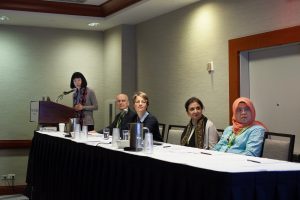
From left to right: Chen Liu, Nazar Kozak, Katarzyna Cytlak, Nadhra Shahbaz Khan, and Sarena Abdullah at the CAA-Getty International Program alumni conference session, February 14, 2019. Photo by Ben Fractenberg
An Italian in China: The Curious Case of Giuseppe Castiglione
Chen Liu, Tsinghua University
What happens when China and the West encounter each other? A clash of traditions may generate unexpected art forms that defy categorization, as tellingly revealed in the life and works of the multi-talented Italian Jesuit artist Giuseppe Castiglione (1688-1766), court painter to three Qing Emperors. Despite his popularity in China both during and after his lifetime, he is surprisingly little known in the West beyond those who specialize in classical Chinese art, with sparse literature in languages other than Chinese (mainly in Italian and French). Existing studies of Castiglione’s works, focusing largely on his paintings, tend to emphasize the “Western” trend he initiated in early modern China or his fusion of “European” and “Chinese” traditions, leading to oversimplification of both. A novel teaching course featuring cultural hybridity in both its subject and audience (a mixed group of Chinese and Western students) may help address such problems of transcultural interpretation and reception as exposed by the curious case of Castiglione. Using Castiglione’s art – painting, decoration and architecture – as a mirror, and by posing previously neglected questions such as “what is ‘non-Chinese’ or ‘non-Western’ in his works, and “which ‘Chinese’ and ‘European’ artistic styles/techniques did he adopt, adapt, or reject”, the course seeks to stimulate more profound reflections on the sophisticated, sometimes ambiguous traditions of both Chinese and European art, their compatibility and incompatibility, and to illuminate the confused in-between areas.
Pedagogy of the Transborders: Reviewing East European art from the perspective of transatlantic cultural exchanges with Latin American and African cultures
Katarzyna Cytlak, Centro de Estudios de los Mundos Eslavos y Chinos, Universidad Nacional de San Martín
Developed since the 1990s by Latin American thinkers, decolonial theory became an effective tool to teach East European art. Concepts, such as “border thinking” (Walter Mignolo) and “transmodernity” (Enrique Dussel), which dealing with bicultural identity in Latin America and postulating a non-hierarchical, inter-epistemic dialogue between cultures, offer a new framework to reconsider transatlantic artistic exchanges and cultural polarizations within the European continent. The paper will analyze how transmodern and decolonial approaches could shed new light on East European art and its dialogue with non-Western cultures. Quotations of customs and rites from Polish folklore by the Polish/Mexican artist Marcos Kurtycz were the result of his biculturalism, as well as an artistic strategy aiming at distinguishing himself on the Mexican scene. Self–identification with African cultures and politics by the Polish artists of the 1980s (Marek Sobczyk, The Luxus Group) could be explained as proof of the artists’ criticism of the Non-Aligned Movement, the symptom of their “radicalized utopian inclusivity” (Boris Groys), and as their critical comment on the late Socialist societies in the processes of Westernization.
Images of Guru Nanak: Locating Patterns of Words in Images
Nadhra Shahbaz Khan, Lahore University of Management Sciences
Traditional arts in the Indian subcontinent are strongly allied to oral traditions and to written text including both folklore and literature. Examples of these abound in secular and religious realms and are manifest in a large body of miniature paintings and murals showing the Hindu stories of Heer-Ranjha, Sassi-Punnoo and Dhruv Bhagat and relief panels illustrating Buddhist jataka tales and Hindu epic poems such as the Ramayana and Mahabharata. This paper maps the depiction of Guru Nanak, the first of the ten Sikh gurus, and their dependence of the Indian visual vocabulary taken from folklore, literature and cultural practices. He is usually painted with a fixed set of attributes, each laden with references to cultural practices and beliefs: some long forgotten, others have remained current until this day. Modern interventions however, have obscured meanings of many of these concepts and practices making it difficult today to fully understand their significance in their iconographic program. Refreshing the forgotten relationship between the word and image promises to lead to creative pedagogical possibilities where realms of imagination, rendition and performance can be navigated to connect not only with the creators and viewers of art but also the ones who dwell in it.
Cross Cultural Encounters through Creative Pedagogy in Teaching Art History
Sarena Abdullah, Universiti Sains Malaysia
This paper explains and discuses my recent and first Collaborative Online International Learning (COIL) with an American university within the context of students’ cross-cultural encounters imbedded through Art History subject(s). In the 15 weeks of Malaysian Modern Art (VHS 202) and Selected Topics In Asian Art (ARTH 294) class, my American collaborator and me, designed and aligned our art history classes pedagogy cross-culturally taking in various considerations of Malaysian and American context into our teaching outcome. This paper will discuss how we have adopted and adapted the COIL module in our own classes, and innovate our collaborative engagements using Facebook as our main platform. From tasks such as personal introductions of students from both Malaysian and American classes, group videos of their cultural/national background, to producing group videos on artworks and /or material culture from local institutions, to completing cross collaboration group work tasks—this pedagogical approach had managed to expose students to different cross-cultural realities and encounters (and even time zones) weaved into their learning experiences. This paper will discuss the context of such creative pedagogy in the context of how Art History can also be a platform to disseminate creative knowledge today.
Apply to the 2019 CAA-Getty International Program
An Interview with Amy Meyers, Recently Retired Director of the Yale Center for British Art
posted by CAA — Jul 26, 2019
In June, Amy Meyers ended a long and fruitful career as Director of the Yale Center for British Art, which she led for seventeen years. Prior to her appointment in 2002, she spent much of her career at research institutes including Dumbarton Oaks; the Center for Advanced Study in Visual Arts at the National Gallery of Art, Washington, DC; and The Huntington Library, Art Collections, and Botanical Gardens. She also taught at the California Institute of Technology, the University of Michigan, Mount Vernon College, and Yale, and has written extensively on the visual and material culture of natural history in the transatlantic world.
Joelle Te Paske, CAA Media and Content Manager, corresponded with Amy over email to reflect upon her tenure at the YCBA, her experiences with CAA, and her plans for the future. Read the interview below.
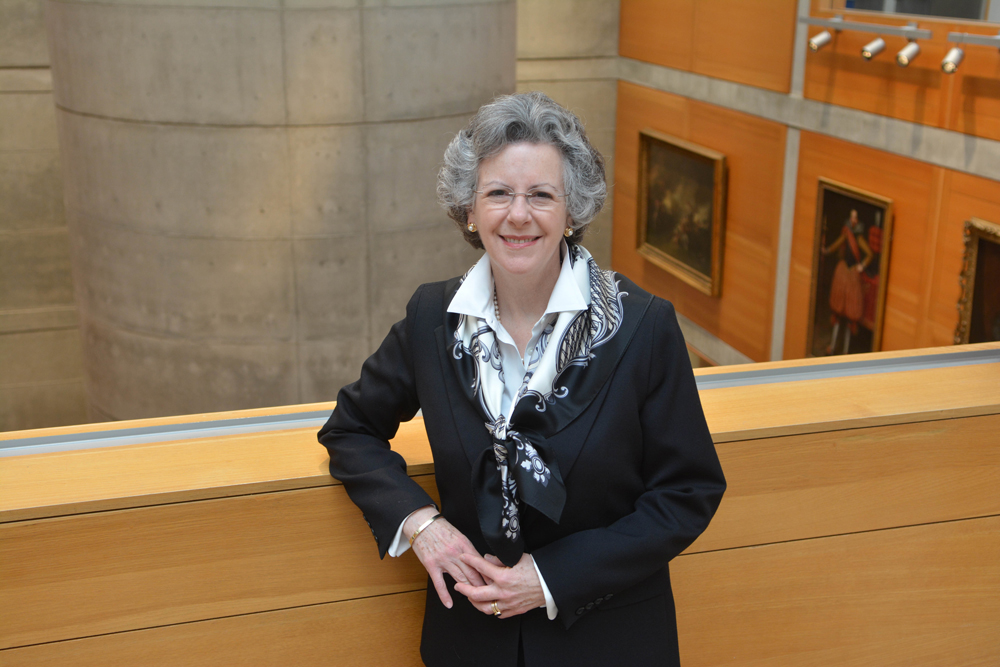
Amy Meyers, Yale Center for British Art, photo by Michael Marsland
Joelle Te Paske: Amy, thank you so much for speaking with us. To begin, what pathways led you to the Yale Center for British Art (YCBA)?
Amy Meyers: There is no question that my experiences as a graduate student at Yale set the stage for my return to direct the Yale Center for British Art 25 years following my arrival as a doctoral candidate in American Studies, in the fall of 1977—the first year the magnificent collections of the newly opened YCBA were accessible to students.
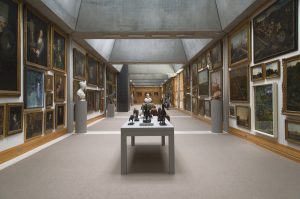
Long Gallery after reinstallation, Yale Center for British Art, photo by Richard Caspole
I had come to Yale to write a dissertation on the photographers who accompanied the federal geological surveys of the American West following the Civil War, and my interest in the art of empire brought me to explore the staggering collections of paintings, prints, drawings, maps, rare books, and manuscripts amassed by the Center’s founder, Paul Mellon, relating to the depiction of the natural world, particularly in the Americas.
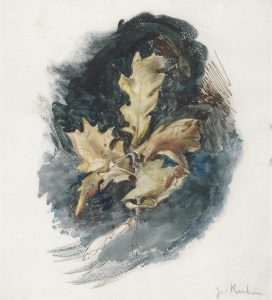
John Ruskin, Study of an Oak Leaf, undated, pen and brown ink with watercolor over graphite heightened with gouache and gum; verso: graphite on paper, Yale Center for British Art, Paul Mellon Collection
The following spring, I enrolled in one of the first courses held at the Center—a seminar on Ruskin, taught by George Hersey. That course included students not only from the Department of the History of Art, but others, who, like me, were interested in the influence of Ruskin’s thought on many aspects of culture, particularly science. Professor Hersey’s important consideration of Ruskin as a major thinker of the nineteenth century, and the discussions that took place in that class between and amongst students, were foundational to my graduate education. I formed collegial friendships with many students who would go on to contribute significantly to art historical scholarship, both in academe and in museums, including David Curry, Bruce Robertson, George Shackelford, Mark Simpson, and Scott Wilcox—and these friendships have informed my scholarship and influenced the way in which I have approached the programs I have had the privilege to run, from the Virginia Steele Scott Gallery of American Art at the Huntington Library, Art Collections, and Botanical Gardens, to the YCBA.
The interdisciplinarity of Professor Hersey’s class reflected Yale’s commitment to exploration across disciplinary boundaries in many areas of study—a commitment that was unusual at American universities in the 1970s. Jules Prown, who had been the YCBA’s first director, creating the institution in concert with Paul Mellon and a distinguished committee of Yale faculty members, was himself devoted to examining the history of art from a broad range of vantage points, and he and his colleagues built that approach into the Center’s culture, both as a research institute and as a public museum with teaching at its heart.

Unidentified man, Paul Mellon, Kenneth Froeberg, and Jules Prown, during the construction of the Yale Center for British Art, 1974, photo by William B. Carter, Yale Department of Public Information, Institutional Archives, Yale Center for British Art
I was privileged not only to study with Jules, but to have him as one of my dissertation advisors. I learned from him the value of the close examination of objects as primary to art historical research, as well as the importance of working collaboratively with groups of scholars in developing the richest, most productive, and enjoyable of research communities. Jules drew around him, through his exciting classes and seminars, a large and devoted coterie of students from across the university who were interested in cross-cultural studies, including art history and material culture—a field he was instrumental in driving forward. Many of the students who took George Hersey’s seminar were part of this group; but others, including Margaretta Lovell (who by then was teaching a course on material culture with Jules), David Lubin, Angela Miller, Rodger Birt, Esther Thyssen, Buffy Easton, Valerie Steele, Catherine Lynn, Rebecca Zurier, Kenneth Haltman, Alexander Nemerov, Richard Powell, and Helen Cooper (who already was serving as Curator of American Paintings at the Yale University Art Gallery) also were active members of Jules’s circle of students (and there were many others who were off writing dissertations, such as Kathleen Foster, or who had graduated relatively recently and were known to us by their groundbreaking work, such as David Solkin). At that time, Bryan Wolf was a young professor of English literature and American Studies who had developed a strong interest in American art, and he also was an important member of Jules’s circle. I was tremendously privileged to have Bryan as one of my dissertation advisors, as well.
The sadly short-lived Center for the Study of American Art and Material Culture, directed by Richard Beard, was established by Robert McNeil, through the Barra Foundation, at the Yale University Art Gallery in the same year that the YCBA opened.
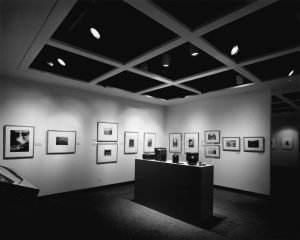
A Survey of American Photographs 1840–1940, installation as presented from March 28–June 6, 1978, organized by the Yale Center for American Art and Material Culture, photo courtesy of the Yale University Art Gallery Institutional Archives
This center both reinforced the community of Americanists at Yale and gave me the opportunity to curate the first of my own exhibitions, American Photographs: 1840 to 1940. The group of Western American historians fostered by my third dissertation advisor, Howard Lamar, and Archibald Hanna, the then-curator of Western Americana at the Beinecke Rare Book and Manuscript Library, also promoted a culture of intellectual exchange, focused quite centrally on the visual culture of the West. Additionally, the American Studies Program offered students and faculty members with cross-disciplinary interests a supportive environment that encouraged innovative, experimental approaches to the study of American culture across the board. Collectively, these centers and programs taught graduate students of my generation at Yale the value of being a member of an engaging and supportive community of intellectual interchange, supported institutionally, and I have no doubt that this experience influenced my interest in being involved in study centers over the course of my professional career.
Indeed, as a graduate student, I was introduced to the vibrant culture of international research institutes when I was awarded a junior fellowship at Harvard University’s Washington-based research institute, Dumbarton Oaks (DO), my dissertation topic having shifted to a broader consideration of the relation of the visual arts to the natural sciences, from the colonial period, through the establishment of the republic, and into the nineteenth century. Some of my closest collegial friendships were formed in the community of DO, including my life-long professional partnership with Therese O’Malley, with whom I presently am organizing an exhibition on John and William Bartram and the emergence of environmental thought in America.
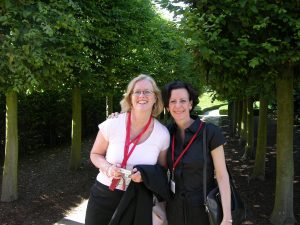
Therese O’Malley and Amy Meyers at a conference at the Royal Botanic Gardens at Kew, 2005.
Therese and I were privileged to be hired by the first dean of the Center for Advanced Study in the Visual Arts (CASVA), at the National Gallery, Henry Millon, to work as predoctoral research assistants for the Architectural Drawings Advisory Group, an international consortium convened at CASVA and supported by the J. Paul Getty Trust to set standards for the scholarly cataloguing of architectural drawings online. This early experience in working with an international group of scholars on one of the first electronic database projects in the history of art stimulated my life-long dedication to advancing the development of electronic tools for art historical research—one that I brought to the Yale Center for British Art when I became director.
The collective of fellowship programs in art history across the museums and research institutes of Washington, DC offered me a rich community of peers as an advanced graduate student and young professional, and this stimulating environment furthered my interest in working within the context of a study center, which had begun at Yale. The appeal of funding art historical research (and research in the humanities more generally) through grants and fellowships was strengthened by the work of my husband, Jack Meyers, an assistant director in the Research Division at NEH at that time—and we have been most fortunate to have developed comparable careers in this regard. While I worked for fourteen years as the Curator of the Virginia Steele Scott Gallery of American Art at the Huntington, which is one of the largest residential fellowship-granting research institutes in the humanities in the world, Jack served as a program officer and then deputy director of the Getty’s Grant Program (now Foundation). We both became fully committed to the support of scholarship internationally, and, over the last years, while I have served as director of the Yale Center for British Art, and CEO of the Paul Mellon Centre for Studies in British Art (PMC) in London, Jack has served as President of the Rockefeller Archive Center. Our complementary positions have allowed us to share our experiences in the running of study centers, which has been wholly gratifying, and, I hope, of benefit to our mutual institutions.
JTP: What would you say are some of the biggest changes you’ve seen during your time at the YCBA?
AM: Certainly the greatest change I have seen in the field of British art over the last seventeen years, which has affected the YCBA and PMC in fundamental ways, and to a certain extent has been promoted by these sister institutions, has been a major shift in vantage point from what commonly has been called the “imperial gaze” to a more global viewpoint. Although by the time I was named director of the YCBA seventeen years ago, the approach to British art had become as much concerned with social history as with connoisseurship, works still were interpreted largely in terms of a relatively closed history of European art. The complex and tragic histories of the British Empire and slave trade were only beginning to affect the ways in which British art was understood, and the canon remained essentially defined as the creation of white, male artists of British birth—or, more generously, of white, male European or colonial American artists who came to practice in the British Isles, or who were associated with British artists and patrons on the Grand Tour.
Over the last years, a sea change has taken place, and not only has the canon expanded—and shifted—to include works by artists from many other parts of the world that came under British dominion or were deeply affected by the Empire, but also by artists of more diverse racial backgrounds and genders. The sense of the West’s ownership of the world on the part of historians of British art has been altered dramatically, and standard practice now insists that even the most traditionally canonical works must be reinterpreted from a global vantage point, and in terms of much larger and more challenging histories.
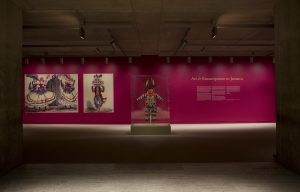
Art and Emancipation in Jamaica: Isaac Mendes Belisario and his Worlds, curated by Tim Barringer, Gillian Forrester, and Barbaro Martinez Ruiz, Yale Center for British Art, 2007, photo by Richard Caspole
JTP: What is a favorite memory—perhaps one that is less well-known—from your time there?
AM: My fond memories from my years at the YCBA—and the PMC—are innumerable, and it is extremely difficult to select a favorite. However, one program stands out as particularly memorable for me personally. In July of 2005, the YCBA co-organized a conference entitled, “Ways of Making and Knowing: The Material Culture of Empirical Knowledge,” with the PMC and the Wellcome Trust Center/Centre for the History of Medicine at University College London (UCL).
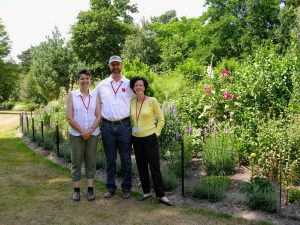
Pamela Smith, Harold Cook, and Amy Meyers, standing in front of a raised flower bed reconstructed from an eighteenth-century plan by garden historian Mark Laird, at Painshill Park, in Cobham, Surrey, during the final session of “Ways of Making and Knowing: The Material Culture of Empirical Knowledge,” July, 2005.
My co-conveners were close associates in the history of science: Pamela Smith, who is the Seth Low Professor of History at Columbia University, and Harold Cook, who, at that time, was director of the Wellcome Trust Center and now is the John F. Nickoll Professor History at Brown University. Beginning with a series of discussions at the Huntington, we planned an interdisciplinary conversation about the material construction of knowledge, examining how artisans and other makers of things informed the ways in which the natural world came to be understood in the West, from the sixteenth-century through the nineteenth. Exploring the relationship between two spheres traditionally understood to be distinct—practical and theoretical knowledge, the lectures and demonstrations were given by the seventy presenters, including art historians and historians of material culture, historians of science, artists, and craftspeople.
The program took place over five days, at sites across London ranging from the Chelsea Physic Garden, the Enlightenment Gallery at the British Museum, the Royal Botanical Gardens at Kew, the Natural History Museum, the Linnean Society, the V&A, and Painshill Park, in Surrey. This experimental program included as many object-study sessions and hands-on making workshops as formal papers, interrogating how the use of natural materials in the processes of making yielded the most profound understanding of nature, feeding science as much as technical knowledge in exciting new ways. A selection of the papers appeared under the title of the conference, in the Bard Graduate Center’s series Cultural Histories of the Material World, published by the University of Michigan Press in 2014. I must say that the support of Brian Allen, at that time the splendid and long-serving Director of Studies of the PMC with whom I had the honor of working closely for ten years, was a special pleasure.
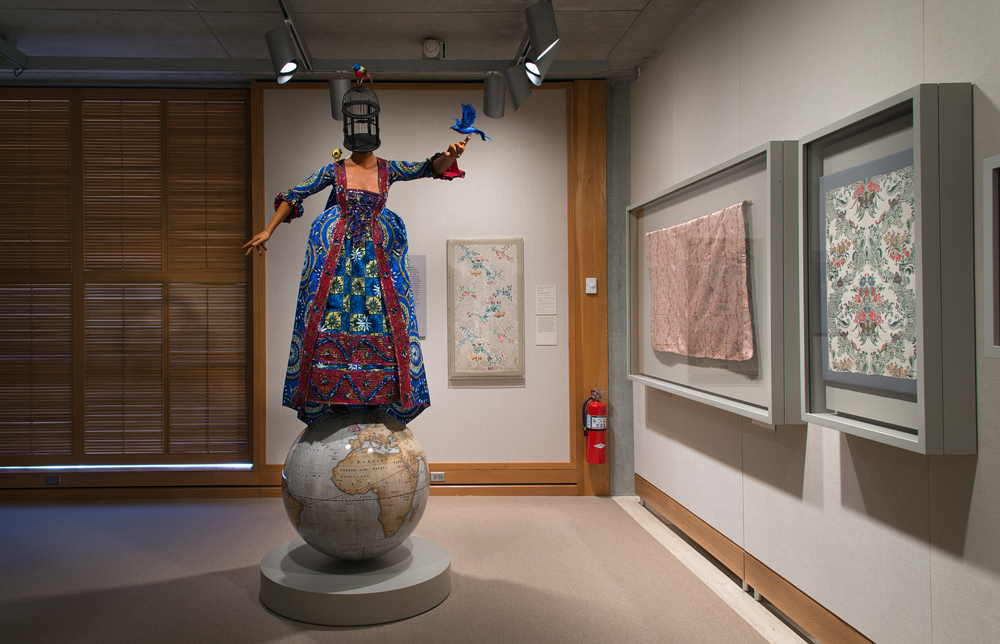
Enlightened Princesses: Caroline, Augusta, Charlotte, and the Shaping of the Modern World installation, including Yinka Shonibare CBE’s Mrs Pinckney and the Emancipated Birds of South Carolina (2017), Yale Center for British Art, photo by Richard Caspole
I also remember with great fondness working with Joanna Marschner, Senior Curator at Kensington Palace, on Enlightened Princesses: Caroline, Augusta, Charlotte, and the Shaping of the Modern World, an exhibition co-organized by the YCBA and Historic Royal Palaces, with the support of the PMC, that was mounted in New Haven and London in 2017. Our mutual interest in women and patronage, particularly in relation to the natural sciences, found its expression in this project, and we look forward to working together on the subject long into the future.
JTP: What is a resource at the YCBA that you think people don’t often know about, but should?
AM: The collection of British art at the YCBA is renowned as the largest and finest outside the UK, comprising over 2,000 paintings; 20,000 drawings and watercolors; 45,000 prints and photographs; and several hundred pieces of sculpture. Much less well known is the institution’s truly glorious rare book and manuscript collection. The Center’s founder, Paul Mellon, began his life as a collector in this field, and over his lifetime he amassed one of the greatest collections formed in the twentieth century, comprising approximately 35,000 titles. Mr. Mellon focused in part on British illustrated books, acquiring the renowned J.R. Abbey collection of British color plate books, which serves as the touchstone for all other collections of this kind. Other major parts of the collection include drawing manuals, sporting books and manuscripts, early maps and atlases, early printed books by Caxton and his contemporaries, and archival and manuscript material relating to British artists, writers, and travelers of all periods.
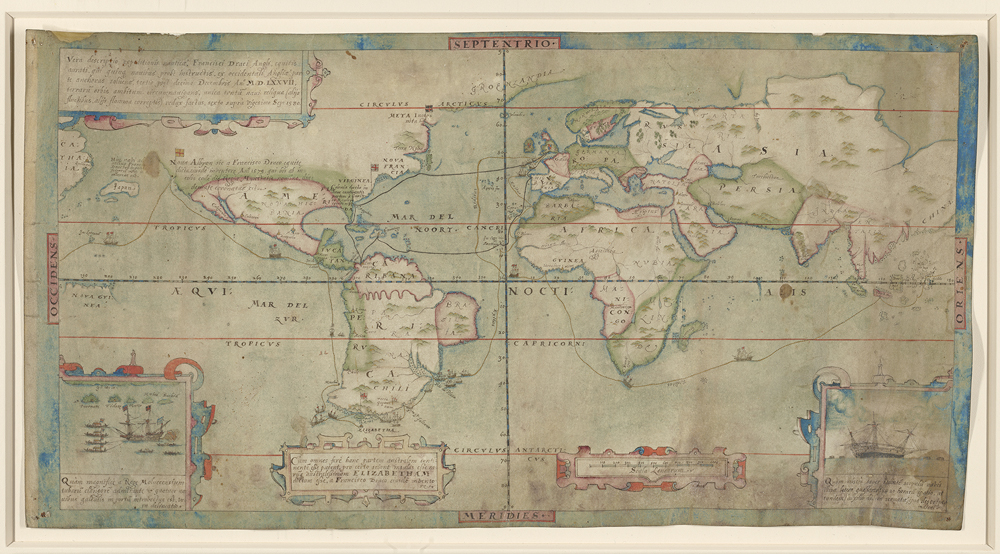
A True Description of the Naval Exploration of Francis Drake, Englishman & Knight, Who With Five Ships Departed from the Western Part of England on 13 December 1577, Circumnavigated the Globe and Returned on 26 September 1580 with One Ship Remaining, the Others Having been Destroyed by Waves or fire, [London (?), ca. 1587], pen and ink and watercolor on parchment, Yale Center for British Art, Paul Mellon Collection
The Rare Books and Manuscripts collection contains splendid photographic holdings, beginning with some of the earliest printed books including original photographic illustrations produced by the first British experimenters with paper-print photography, such as William Henry Fox Talbot. These collections have grown enormously over the years, as have the photographic collections in the Prints and Drawings Department, making the Center one of the most significant repositories of British photographs in the country.
The same holds true for the development of the institution’s collection of contemporary British art, and over the course of this summer, the Center has mounted an exhibition illuminating the role that donors have played in enhancing both areas of the institution’s collections over the last few years. Entitled Photographs/Contemporary Art: Recent Gifts and Acquisitions, the exhibition demonstrates the breadth and depth of these holdings and signals their continued growth.
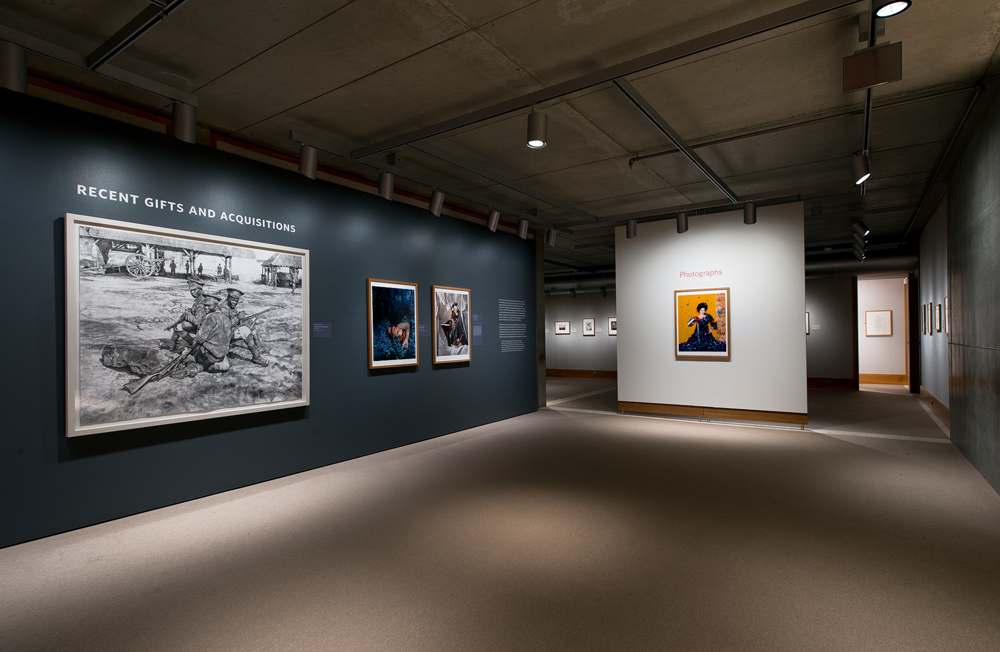
Photographs | Contemporary Art: Recent Gifts and Acquisitions installation, Yale Center for British Art, photo by Richard Caspole
JTP: When did you first become a CAA member? Do you have a favorite memory from a CAA conference?
AM: I have been a member of the CAA for so long that I do not remember precisely when I joined—undoubtedly by the early 1980s, when I was attending conferences regularly in my later years of graduate school. My memories of the very first conference I attended are shrouded in the mists of time, but I believe that I joined a group of Yale graduate students at a conference in New York while I was still enrolled in courses, in the late 1970s.
I have countless happy memories from conferences throughout the years, from sessions I have co-organized on the visual and material culture of natural history with my long-standing colleague, Therese O’Malley, to the multitude of fine papers given by scholars in my own fields of American and British art. Of course, one of the most important functions of the conference is to introduce participants to subjects that lie beyond their own areas of expertise, and I have learned an enormous amount from papers on topics to which I have had little exposure, especially as art history has evolved in such exciting ways over the last years. New methodological approaches are always stimulating to consider, and I particularly have enjoyed learning from the work of younger colleagues. Indeed, the call for papers for next year’s conference promises a rich and important group of sessions that will have me running from one talk to the next throughout the proceedings.
Since 1989, due to my association with The Huntington and the YCBA and PMC, I have had the pleasure of attending the winter meeting of the Association of Research Institutes in Art History (ARIAH), as an affiliated society, which always is held the first day of the CAA conference. Naturally, I also have enjoyed attending reunions of the departments and study centers with which I have been connected. The joint reunion of the YCBA and PMC has been a true pleasure to co-host with the PMC’s current Director of Studies, Mark Hallett, who promotes the mutual interests of his London research center and the YCBA with dedication and inspired vision. Mark and I have been deeply grateful to the Deputy Directors of Research of these sister institutions, Martina Droth and Sarah Turner, for organizing these shared events annually.
I do have one favorite memory that stands out among all others, however, and that is of the 2009 Terra Foundation for the Arts Distinguished Scholar Session, entitled “Generations: Art, Ideas, and Change,” in honor of Jules Prown. Chaired by Bryan Wolf, and including papers by Alex Nemerov, Margaretta Lovell, Jennifer Roberts, Jennifer Greenhill, and Ethan Lasser, the session paid special tribute not only to the professor who had inspired so many of us as graduate students at Yale, but also to the scholar who had informed the work of students pursuing the study of American art and material culture throughout the world through his groundbreaking research and approaches to analysis.
JTP: I imagine it is impossible to summarize the sentiments surrounding a 17-year tenure, but if there was one feeling you could share in the wake of your departure from the directorship of the YCBA, what would you say it is?
AM: The feeling I wish to share is one of excitement.
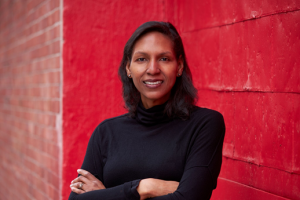
Courtney J. Martin, photo by Argenis Apolinario
As I have indicated, the field of British art–and of art history more generally—is developing and changing in such important ways, and I have no doubt that Courtney J. Martin, who just has begun her first term as the Center’s brilliant new director, will work with her YCBA colleagues not only to continue to introduce the work of new artists to the collection, but to encourage an ever-expanding community of visitors from the university, the city, the region, and the world through innovative displays, exhibitions, publications, and programs. She is a tremendous addition to the impressive complement of collection directors under the excellent leadership of Yale’s Vice Provost for Collections and Scholarly Communications, Susan Gibbons, and I expect that splendid developments are about to take place across all of the university’s museums and libraries with this gifted team in place.
JTP: What are you most proud of having accomplished at YBCA?
AM: My pride lies in what I was able to accomplish in concert with my superlative friends and colleagues: the staff of the YCBA and PMC, Yale students and faculty members, the 250 visiting scholars who have joined our community to pursue research in the YCBA’s collections, our advisory committees and consultants, the PMC’s Board of Governors, and supporters of both institutions. So much has been accomplished collectively that a full review would be impossible, but I will outline some of our most significant collaborative achievements.
Working with museums and cultural institutions across the UK, and in certain instances the United States, we developed a program of over fifty major loan exhibitions which explored a wide range of topics from the early modern period through the current day. These were underpinned by workshops involving students and scholars from around the world, and they were enhanced by an equivalent number of significant publications produced in association with Yale University Press London (YUPL). Approximately forty in-house exhibitions and displays, often developed with undergraduates and graduate students, enriched the exhibition program, examining the Center’s own holdings from important new vantage points.
One such exhibition, Unto This Last: Two Hundred Years of John Ruskin, curated by three of Tim Barringer’s graduate students—Tara Contractor, Victoria Hepburn, and Judith Stapleton—has been in the planning stages for some time as the Center’s central contribution to the bicentennial commemoration of Ruskin’s birth (both critical and celebratory), and it will open on the evening of September 17th of this year, accompanied by a leading-edge catalogue edited by Tim, to which the students, and others, have contributed. I have no doubt that for this cohort of students, the experience of working with Tim on an assessment of Ruskin’s significance as a thinker for the modern world will be as important as George Hersey’s Ruskin seminar was for me and my own group of peers over forty years ago.
During the last seventeen years, the research cultures of the YCBA and the PMC were augmented through the joint efforts of a new Research Division at the Yale Center and an amplified program at the London Centre, which also produced a superb run of publications with YUPL. Support of scholars across the field of British art was substantially increased through the PMC’s grant program and the YCBA’s visiting scholars program. The PMC and YCBA also collaborated to develop an innovative online journal, British Art Studies, which is fully accessible, free of charge, to the world.
The YCBA’s education program developed magnificently, as well. Our docents toured 92,929 school-age students through the galleries, and an average of 88 Yale classes utilized the collections each year, with nearly 14,000 Yale students visiting the Study Room either with a class or to use collections on their own. The Center hosted 903 undergraduate student interns and workers, 76 graduate student research assistants, and 20 postdoctoral research associates who received doctorates from other universities. Empirically based programs focused on close looking in the galleries, designed to increase both the sensitivity and diagnostic skills of medical and nursing students (the first such programs in the world), continued to develop for Yale graduate student in other fields.
Additionally, creative learning programs for teenage girls on the autism spectrum were put into place, and a teaching relationship with Chapel Haven, a home for adults with cognitive disabilities, flourished. The Center actively joined the university’s mentorship program to engage undergraduates who have attended New Haven public schools, or approved charter schools, and who have been awarded New Haven Promise scholarships, in professional experiences over the summer months. We benefitted from the fine work of those who were participants in the program, and we were able to add several extremely talented young people to our permanent staff from the program.
The collections also developed in exciting ways over the years, with curators adding to the historic corpus with important works from the Tudor period through the mid-twentieth century, and with modern and contemporary works expanding the Center’s holdings into our own time.
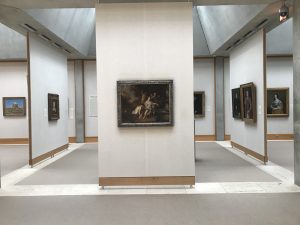
Fourth-floor gallery installation, including the new acquisition of Peter Lely’s Diana and her Nymphs at a Fountain (ca.1648), Yale Center for British Art, photo by Edward Town
Sculpture became a special focus of the acquisitions program, along with photography and modern and contemporary art. In all, almost 9,000 objects and collections across the curatorial departments amplified the Center’s holdings for teaching, research, and exhibition.
A program to make the Center’s entire collection accessible virtually, placed 90,000 records online, and 78,000 high-resolution digital images of works in the public domain freely available to the world for any use, in concert with Yale’s Open Access policy. The Center now seeks to connect these online collections with others across the university and the globe, through linked open data, allowing audiences worldwide to explore the rich global history of British art.
We also worked with collections across the university to develop a state-of-the-art conservation program on Yale’s West Campus, and to create the Institute for the Preservation of Cultural Heritage, with a major conservation science program intended not only for the technical assessment of our own collections, but also to address global conservation needs. Additionally, the Center published a model conservation plan for its landmark building designed by Louis I. Kahn, which has helped to steer the conservation of other modern buildings of cultural significance according to best practices. This plan allowed a three-phased conservation program to address the physical needs of the Kahn building, and following the conservation of the interior spaces and upgrading of the mechanical systems, a freshly conceived display of the art collections was installed, entitled “Britain in the World.”
JTP: What are you most excited about when you think of your next steps? Are there projects you are looking forward to?
AM: Returning to my own scholarship is a great joy, and I am beginning to work with Therese O’Malley to co-curate an exhibition examining the naturalists John and William Bartram and the early development of environmental thought in North America and the transatlantic world—a project that derives from the dissertations on which we worked together so many years ago, but that now is informed by the scholarship of those working on the culture of natural history in the Americas from new points of view.
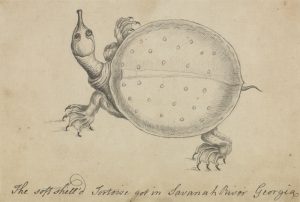
William Bartram, The Soft Shell’d Tortoise Got in Savanah River Georgia, ca. 1773, gray wash, pen and black ink, and graphite on paper, Yale Center for British Art, Gift of Charles Ryskamp
The Bartrams, who created one of the first scientific gardens in the British colonies, began to be mythologized in their own time, and have been the focus of academic study since the nineteenth century. However, their work is just beginning to be assessed in relation to the knowledge they gained not only from Native American peoples they encountered on their collecting expeditions, but from enslaved peoples of African descent in bondage to the Bartrams’ family members and friends throughout the southern colonies, as well as those William himself enslaved on a small, short-lived plantation that he attempted to establish in Florida. This project will serve as a case study examining the diverse systems of knowledge about nature that converged and collided in this period, resulting in new conceptions of a wholly interconnected cosmos, in a constant state of flux.
Amy Meyers BIOGRAPHY
Amy Meyers (Yale PhD, American Studies, 1985) retired from the directorship of the Yale Center for British Art on June 30th of this year. Prior to her appointment in July of 2002, she spent much of her career at research institutes, including Dumbarton Oaks; the Center for Advanced Study in Visual Arts at the National Gallery of Art, Washington, D.C; and The Huntington Library, Art Collections, and Botanical Gardens, where she served as Curator of American Art from 1988 through June of 2002. Meyers also has taught the history of art at the California Institute of Technology, the University of Michigan, Mount Vernon College, and Yale. As Director of the Center, Meyers sought to strengthen the institution’s educational and research initiatives. She endeavored to promote a rigorous academic publication program in association with Yale University Press and to develop an exhibition program of the highest scholarly standard in partnership with major museums across Europe and the United States. She expanded the Center’s fellowship program; amplified the teaching mission in concert with departments and programs across the university; and promoted the cataloguing of the collections on-line, with free and open access to all images in the public domain. Meyers supported the creation of a conservation plan for the institution’s landmark building, designed by Louis I. Kahn, and she oversaw the conservation of the building, as well as two full-scale reinstallations of the entire collection.
Meyers has written extensively on the visual and material culture of natural history in the transatlantic world, serving as editor of Knowing Nature: Art and Science in Philadelphia, 1740 to 1840, with the assistance of Lisa Ford (New Haven: Yale University Press, 2011); with Harold Cook and Pamela Smith, Ways of Making and Knowing: The Material Culture of Empirical Knowledge (Ann Arbor: The University of Michigan Press, 2011); with Therese O’Malley, The Art of Natural History: Illustrated Treatises and Botanical Paintings, 1400-1850 (Washington, D.C.: National Gallery of Art, Studies in The History of Art Series, 2008); Art and Science in America: Issues of Representation (San Marino: The Huntington, 1998); and, with Margaret Pritchard, Empire’s Nature: Mark Catesby’s New World Vision (Chapel Hill: University of North Carolina Press, 1998). She also has organized numerous international symposia in the field, including Curious Specimens: Enlightenment Objects, Collections, Narratives (with Luisa Calè, Michael Snodin, Margaret Powell, and Cynthia Roman; London, 2010), Ways of Making and Knowing: The Material Culture of Empirical Knowledge (with Hal Cook and Pamela Smith; London, 2005); and ‘Curious in Our Way’: The Culture of Nature in Philadelphia, 1740 to 1840 (Philadelphia, 2004). With Therese O’Malley, she currently is co-organizing an exhibition on John and William Bartram and the emergence of an environmental conception of the natural world in colonial and early republican America, to be mounted in 2024.
CAA Announces Inaugural Recipients of the Art History Fund for Travel to Special Exhibitions
posted by CAA — Jun 19, 2019
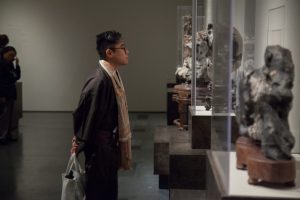
2018 CAA Annual Conference. Photo: Rafael Cardenas
In fall 2018, we announced CAA had received an anonymous gift of $1 million to fund travel for art history faculty and their students to special exhibitions related to their classwork. The generous gift established the Art History Fund for Travel to Special Exhibitions.
The jury for the Art History Fund for Travel to Special Exhibitions met in May 2019 to select the first group of recipients as part of the gift.
The awardees are:
Catherine Girard, Eastern Washington University
Class: Topics in Art History: Manet Inside Out
Exhibition: Manet and Modern Beauty at The J. Paul Getty Museum, Los Angeles
Luis Gordo Peláez, California State University Fresno
Class: Arts of the Colonial Andes
Exhibition: Art & Empire: The Golden Age of Spain at The San Diego Museum of Art
Alison Miller, University of the South
Class: Japanese Print Culture
Exhibition: Yoshitoshi: Spirit and Spectacle at the Minneapolis Institute of Art
Rachel Stephens, University of Alabama
Class: American Portraiture
Exhibition: Black Out: Silhouettes Then and Now at the Birmingham Museum of Art
“We’re delighted to announce the inaugural recipients of the Art History Fund for Travel to Special Exhibitions, a groundbreaking CAA program designed specifically to enhance students’ first-hand knowledge of works of art,” said Hunter O’Hanian, CAA’s executive director. “The new Fund places a spotlight on the critical work art history scholars are doing to grow the field, with CAA as the go-to organization supporting and advancing their work.”
The Art History Fund for Travel to Special Exhibitions supports travel, lodging, and research efforts by art history students and faculty in conjunction with special museum exhibitions in the United States and throughout the world. Awards are made exclusively to support travel to exhibitions that directly correspond to the class content, and exhibitions on all artists, periods, and areas of art history are eligible.
Applications for the second round of grants will be accepted by CAA beginning in fall 2019. Deadlines and details can be found on the Travel Grants page.
Announcing the Recipients of the 2019 Spring Millard Meiss Publication Fund Awards
posted by CAA — Jun 13, 2019
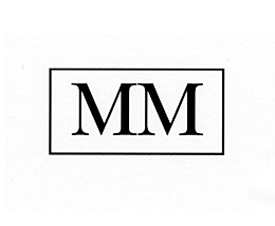
The Millard Meiss Publication Fund is made possible by a generous bequest of the late Prof. Millard Meiss. Two times each year, CAA awards grants to publishers in art history and visual culture to support presses in the publication of projects of the highest scholarly and intellectual merit that may not generate adequate financial return.
The Meiss grantees for spring 2019 are:
Bajorek, Jennifer, Unfixed: Photography and Decolonial Imagination in West Africa, Duke University Press, 2019.
Busbea, Larry, The Responsive Environment: Design, Aesthetics, and the Human in the 1970s, University of Minnesota Press, 2019.
Fozi, Shirin, Romanesque Tomb Effigies: Death and Redemption in Medieval Europe, 1000-1200, Penn State University Press, 2020.
Guinness, Katherine, Schizogenesis: The Art of Rosemarie Trockel, University of Minnesota Press, 2019.
Naoi, Nozomi, Beyond the Modern Beauty: Takehisa Yumeji and the New Mediascape of Early Twentieth-Century Japan, University of Washington Press, 2019.
Newbury, Susanna, Speculations: Art, Real Estate, and the Making of Global Los Angeles, University of Minnesota Press, 2020.
Overton, Keelan, Iran and the Deccan: Persianate Art, Culture, and Talent in Circulation, 1400-1700, Indiana University Press, 2020.
Schwartz, Vanessa R., Jet Age Aesthetic: The Glamour of Media in Motion, Yale University Press, 2020.
Sichel, Kim, Making Strange: The Modernist Photobook in France, Yale University Press, 2020.
Silberstein, Rachel, Embroidered Figures: Fashion and Commerce in Nineteenth-Century China, University of Washington Press, 2020.
VanDiver, Rebecca, Negotiating Traditions: Loïs Mailou Jones and the Composite Aesthetics of Blackness, Penn State University Press, 2020.
Zinman, Gregory Austen, Making Images Move: Handmade Cinema and the Other Arts, University of California Press, 2020.
Learn more about the Millard Meiss Publication Fund.
The Getty Foundation to Fund the CAA-Getty International Program for a Ninth Year
posted by CAA — Jun 12, 2019

CAA-Getty Scholars at the 2019 Annual Conference in New York. Photo: Ben Fractenberg
The Getty Foundation has awarded CAA a grant to fund the CAA-Getty International Program for a ninth consecutive year. The Foundation’s support will enable CAA to bring twenty international visual-arts professionals to the 108th Annual Conference, taking place February 12-15, 2020 in Chicago. Fifteen individuals will be first-time participants in the program and five will be alumni, returning to present papers during the conference. The CAA-Getty International Program provides funds for travel expenses, hotel accommodations, per diems, conference registrations, and one-year CAA memberships to art historians, artists who teach art history, and museum curators.
The application portal is now open. Grant guidelines and the 2020 application can be found here.
“The Getty Foundation is proud to continue its commitment to the CAA-Getty International Program and offer support that brings together diverse scholars from around the world,” says Joan Weinstein, acting director of the Getty Foundation. “CAA’s dedication to this joint program strengthens the annual conference and builds the field of art history as a global discipline.”
Since the CAA-Getty International Program’s inception in 2012, it has brought over 120 first-time attendees from 46 countries to CAA’s Annual Conference. Historically, the majority of international registrants at the conference have come from North America, the United Kingdom, and Western European countries. The CAA-Getty International Program has greatly diversified attendance, adding scholars from Central and Eastern Europe, Russia, Africa, Asia, Southeast Asia, the Caribbean, and South America. The majority of the participants teach art history, visual studies, art theory, or architectural history at the university level; others are museum curators or researchers.
One measure of the program’s success is the remarkable number of international collaborations that have ensued, including an ongoing study of similarities and differences in the history of art among Eastern European countries and South Africa, attendance at other international conferences, publications in international journals, and participation in panels and sessions at subsequent CAA Annual Conferences. Former grant recipients have become ambassadors of CAA in their countries, sharing knowledge gained at the Annual Conference with their colleagues at home. The value of attending a CAA Annual Conference as a participant in the CAA-Getty International Program was succinctly summarized by alumnus Nazar Kozak, Senior Researcher, Department of Art Studies, National Academy of Sciences of Ukraine “To put it simply, I understood that I can become part of a global scholarly community. I felt like I belong here.”
Read our Member Spotlight with Nazar Kozak.
About the Getty Foundation
The Getty Foundation fulfills the philanthropic mission of the Getty Trust by supporting individuals and institutions committed to advancing the greater understanding and preservation of the visual arts in Los Angeles and throughout the world. Through strategic grant initiatives, it strengthens art history as a global discipline, promotes the interdisciplinary practice of conservation, increases access to museum and archival collections, and develops current and future leaders in the visual arts. It carries out its work in collaboration with the other Getty Programs to ensure that they individually and collectively achieve maximum effect.
Affiliated Society News for June 2019
posted by CAA — Jun 06, 2019
Affiliated Society News shares the new and exciting things CAA’s affiliated organizations are working on including activities, awards, publications, conferences, and exhibitions.
Interested in becoming an Affiliated Society? Learn more here.
American Society of Appraisers
The 2019 ASA Personal Property Connoisseurship Conference – NY will be held at the Marriott Marquis centered in the heart of New York City. With a focus on The Fine and Applied Arts Professional in the 21st Century: How to Adapt, Function and Excel, this intensive three-day conference will provide hard-to-obtain insights into key topics and issues facing personal property appraisers and other art industry professionals. Connect with experts, scholars, and allied professionals from across North America. Presenting speakers include individuals from the industry media, specialty auction houses, galleries, museums, and academia, among others. Register here: http://www.appraisers.org/Education/conferences/personal-property-conference
Association of Art Museum Curators (AAMC)
ASSOCIATION OF ART MUSEUM CURATORS FOUNDATION
Join us this June for a series of three webinars that will restructure and rethink how we consider the topic of management. By focusing on Navigation, Environment and Advancement, the webinars will break with the traditional hierarchical and vertical manner in which conversations around management are typically approached. Each program will present dialogues relevant to all career stages, and will consider ways in which the topic can impact sense of self, well-being, and personal success.
Webinar 1: Navigation – June 11, 2019
Webinar 2: Environment – June 18, 2019
Webinar 3: Advancement – June 25, 2019
Organized and hosted by the AAMC Foundation the series is open to all, with AAMC members receiving discount admission. Limited space is available, register today!
ASSOCIATION OF ART MUSEUM CURATORS (AAMC) & AAMC FOUNDATION
AAMC members are invited to Submit a Session Proposal for the 2020 AAMC & AAMC Foundation Conference, slated for May 2 – 5, 2020 in Seattle, WA. We are seeking proposals on the topic of advancing curatorial work and art organizations beyond traditional and perceived thresholds and boundaries. In selecting this topic, we anticipate dialogues reconsidering linear narratives, challenging concepts of borders, investigating social and cross cultural interactions, and engaging in activism.
We request proposals considering the full spectrum of interpretations, looking at possible topics holistically and not solely through the curatorial lens. Sessions should propose discussions acknowledging community, which involves our workplace colleagues and partners; donors and sponsors; visitors and neighbors; for-profit arts sector; and more. As with all our programming, the proposals should be inclusive and welcoming of a diverse audience. Review the full guidelines and submit your session proposal before 5PM ET on Monday, June 24, 2019.
ASSOCIATION OF ART MUSEUM CURATORS FOUNDATION
Applications are open for AAMC Foundation’s Mentorship Program, which gives early- to mid-career curators opportunities to advance their professional development, learn about important issues in the field, share ideas and cultivate strong bonds with peers, and develop a working relationship with a senior curator. The program’s goal is to advance the skills, experience and knowledge needed to succeed in a curatorial career, not specifically develop a singular curatorial or scholarly project. All Mentees are provided funding to accommodate program components, including travel and other benefits, which are outlined in greater detail here. A group of curator jurors will select ten mentees for 2019-2020 Program, with Mentees and Mentors announced this July.
Applications are due by 12PM ET on Tuesday, June, 25, 2019. Click here to learn more and submit your application today!
Association for Latin American Art (ALAA)
ALAA Awards
In addition to the annual book award, ALAA announces two new awards. See the links for details.
ALAA-Arvey Foundation Book Award
ALAA-Arvey Foundation Exhibition Catalogue Award
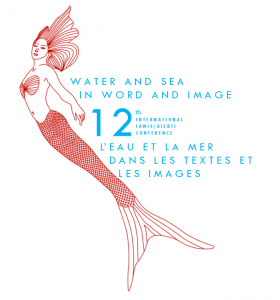
International Association of Word and Image Studies (IAWIS)
CFP for the 2020 Conference in Luxembourg: https://waterandsea2020.uni.lu/program/
American Institute for Conservation
Following a successful Annual Meeting in Connecticut, we are looking forward to our 2020 Annual Meeting in Salt Lake City! The theme will be “Conservation – Reactive and Proactive.” The call for papers will open later this summer, please continue to check our site for updated information.
If you are interested in learning more about conservation and supporting the essential work performed by conservators and preservation professionals, become a Friend of Conservation! Friends receive exclusive insights into conservation, including tips on preserving personal collections, and sustain key programs that promote the preservation of all cultural heritage. Learn about the benefits of being a Friend and how you can help save the art and artifacts that keep our memories alive. Support the Foundation for Advancement in Conservation through www.culturalheritage.org/friends.
International Sculpture Center
Sculpture magazine is thrilled to announce its new website. Go to www.sculpturemagazine.art for reviews, features, news, videos, and other daily content.
Attend workshops, studio tours, and network with artists at the 29th International Sculpture Conference in Portland, OR. Registration opens June 11th at www.sculpture.org/portland19.
Society of Architectural Historians
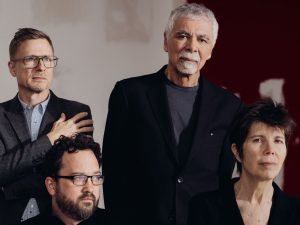
Photo: Geordie Wood, courtesy of DS+R
The Society of Architectural Historians will present the inaugural SAH Change Agent Award to the partners of the New York architecture firm Diller Scofidio + Renfro—Elizabeth Diller, Ricardo Scofidio, Charles Renfro and Benjamin Gilmartin—at a reception at the Century Club in midtown Manhattan on July 17. The award recognizes DS+R for their innovative, paradigm-shifting work, which takes an interdisciplinary approach to design with a focus on cultural and civic projects. Proceeds benefit SAH educational programs and publications, and the ongoing restoration SAH’s landmark headquarters, Charnley-Persky House (1891–1892), designed by Adler and Sullivan with Frank Lloyd Wright.
Nominations for the SAH Publication Awards and the SAH Award for Film and Video are open through July 31. The Publication Awards recognize the most distinguished publications in architectural history, urban history, landscape history, preservation, and architectural exhibition catalogues. The SAH Award for Film and Video was established in 2013 to recognize annually the most distinguished work of film or video on the history of the built environment.
The SAH Board of Directors seeks nominations for the 2020 class of SAH Fellows, those professionally active or retired individuals who have distinguished themselves by a lifetime of significant contributions to the field of architectural history. Deadline August 1.
The SAH Nominating Committee seeks your nominations for five new SAH Board members and a Second Vice President who will begin their terms after the Seattle annual conference in April/May 2020. Deadline August 1.
Graduate students and emerging scholars are invited to apply for the SAH Study Program Fellowship to attend the SAH Field Seminar to Japan, December 6–18. The tour will be led by Ken Tadashi Oshima. The fellowship covers the single occupancy price of the tour and includes a travel stipend. Deadline August 2.
SECAC
On behalf of the SECAC Nominating Committee, First Vice-President Lawrence Jenkens announced that the 2019 SECAC election results have been finalized. The following members have been elected to the SECAC Board of Directors for a three-year term of appointment. For Arkansas, Dito Morales, Associate Professor of Art History at the University of Central Arkansas, was re-elected to a second term. For Florida, Jeff Schwartz, Dean of Undergraduate Studies and Associate Vice-President of Academic Affairs at Ringling College of Art and Design was elected to his first term. For Mississippi, Elise Smith, Professor of Art History and Sanderson Chair of Arts and Sciences at Millsaps College in Jackson, Mississippi, was elected to her first term. Smith previously served on the SECAC Board of Directors from 2000 to 2006. For Tennessee, Christina Renfer Vogel, Assistant Professor of Painting and Drawing at the University of Tennessee at Chattanooga and 2019 SECAC Conference Co-Director, was elected to her first term. For the First At-large Seat, Dennis Ichiyama, Purdue Univeristy Professor of Graphic Design emeritus, was re-elected to a second term. The SECAC Nominating Committee thanks all members who ran for Board seats this year.
Association of Greek Art Historians (EEIT)
The Association of Greek Art Historians (EEIT) hosted a number of distinguished speakers in the context of its 2019 Lecture Series. The aim of the series is to engage a broader audience and promote the discipline of art history in the wider public sphere in Greece. The topics ranged from global art history to the art of the periphery, addressing theoretical and methodological issues of contemporary relevance. Concurrently, novel interpretations of modernism were proposed from the vantage points of both the center, a eurocentric perspective, and the periphery, the lens of the ‘european other.’ James Elkins, E.C. Chadbourne Professor at the School of the Art Institute of Chicago, talked about the “The End of Diversity in Writing about Art” (January 11, 2019, Benaki Museum, 138 Pireos St., Athens, Greece). Elkins proposed that despite recent interest in global artistic production, writing about art is primarily characterized by a hegemony of western theoretical discourses and related practices. Mark Crinson provided an enhanced reading of modernist architecture through the ideals of internationalism in a lecture entitled “Babel as Modernism” (April 11, 2019, Athens School of Fine Arts, Athens, Greece). Mark Crinson is professor of architectural history at Birbeck, University of London and president of the European Architectural History Network (EAHN). Matthew Rampley shared initial thoughts and material related to the European Research Grant project Continuity / Rupture: Art and Architecture in Central Europe 1918-1939 that he is currently leading from Masaryk University in Brno in the Czech Republic. The lecture was entitled “A Legacy of Empire? Art and Architecture in Central Europe after 1918” and examined how ‘modernist’ art was deployed in Central Europe to create and enforce national identities at the aftermath of the collapse of the Habsburg Empire after the First World War. (May 17, 2019, National Hellenic Research Foundation, Athens, Greece).
Design Incubation
Calls for Participation: Design Incubation Upcoming Events
Call for Entries: 2019 Communication Design Educators Awards
An international juried competition of communication design research, practice, teaching, and service. Expand the design record, promote excellence, and share knowledge in the discipline. Submit your creative work, published research, teaching, and service. Nominations are accepted until July 31, 2019. Entries are currently being accepted until August 31, 2019.
Visit the 2019 Design Incubation Communication Design Educators Awards announcement to read about our distinguished jurors.
Colloquium 6.1: Quinnipiac University, Call for Submissions
Call for design research presentation abstracts. Deadline: Saturday, July 6, 2019. Hosted by Courtney Marchese and the School of Communications.
School of Communications
Quinnipiac University
Sat, October 5, 2019
10:00 AM – 5:30 PM
A Day of Writing
Come spend an uninterrupted day working on a writing project. Participants will spend the day writing or conducting preliminary work on a writing project. The Day of Writing is open to design faculty and to those working in related fields.
Quinnipiac University
October 6th 2019
10:00am –4:00pm
The Design Incubation Residency at Haddon Avenue Writing Institute 2019
Rolling acceptances until Sept 30, 2019. Only 14 seats are available for this event. This 3-day residency allows researchers and scholars time to work on existing writing projects or to start a new writing project. It offers participants concentrated time to work on writing projects and the opportunity to take advantage of one-on-one consultations with event facilitator Maggie Taft.
Haddon Avenue Writing Institute
2009 W. Haddon Ave, Chicago Illinois
October 25-27, 2019
Visual Resources Association
Approximately 200 information professionals gathered in LA’s Little Tokyo for the VRA conference from March 26-29, 2019: http://www.vraweb.org/conferences/vra2019/. Many conference presentations have been uploaded to SlideShare at https://www.slideshare.net/VisResAssoc and photographs from the events can be found at https://www.flickr.com/groups/vra_events/. The VRA’s journal of professional practice is expecting articles based on conference presentations to be in the June issue of the VRA Bulletin, which is now an open access online journal, see: https://online.vraweb.org/vrab/
Visual Resources Association (VRA) is a multidisciplinary organization dedicated to furthering research and education in the field of image management within the educational, cultural heritage, and commercial environments. For more information on VRA: http://vraweb.org/.
Call for Proposals
The Visual Resources Association’s 2020 Annual Conference will be held in Baltimore, Maryland from Tuesday, March 24th through Friday, March 27th, 2020 at the Royal Sonesta Harbor Court Baltimore.
Presenting at the VRA Conference provides you with the opportunity to see how your ideas, research, work, and passion connect to those of other dedicated professionals while building networks and friendships in an open, collaborative environment.
Click here to access the conference proposal form.
The VRA Executive Board is soliciting proposals for papers, sessions, special interest/user groups, and workshops for the 2020 program until Friday, July 19th. All proposals are welcome, and if you have other conference ideas or suggestions that do not fit the conference proposal form, please reach out to the Vice President for Conference Program, Sara Schumacher. Please note a call for Lightning Round presenters will go out in the fall/winter, so that we can better accommodate recent innovations and activities, as well as, students and emerging professionals.
A paper is an individual idea submission, which will be reviewed for possible grouping into a session. Your ideas, whether they come to us alone or in a group, are equally valued in the Board’s proposal and selection process.
- A session is a maximum 60-minute moderated panel, usually consisting of no more than 3 presenters each, speaking for 15 to 18 minutes, followed by a brief facilitated question and answer period. If you feel your session topic requires more time, consider dividing it into two sessions, consisting of a Part I and a Part II.
- A special interest/user group is a 60-minute informal, community -driven, facilitated group discussion on topics related to a specific segment of the VRA membership.
- A workshop is a 2, 4, or 8-hour workshop to develop skills and experience in the field of visual resources with hands-on activities.
What should you propose?
Past conference schedules can give you an idea of the range of topics presented in previous years or read through the list below of suggested topics compiled from the 2019 post-conference survey responses to find inspiration. Please, do not be afraid to deviate and propose something new or highlight an area of concern that you feel has not been adequately addressed previously, as you may find new collaborators and colleagues. Moderators may put out calls for presenters within a proposed topic before or after the submission of a proposal. The VRA Executive Board will be looking for articulate and concise submissions with lists of presenters, but submissions without presenter lists are encouraged as well.
Suggested topics:
- Coding (PHP, Python, SQL, etc.)
- Community Outreach
- Copyright/Intellectual Property
- Digital Asset Management, Digital Curation, Digital Preservation, etc.
- Digitization (Workflows, Digital Capture and Imaging Technologies)
- Digital Scholarship and Digital Humanities
- Diversity, Equity, Inclusion, Cultural Competencies, Social Justice
- Project Management (Communication, Grant writing, Prioritization, Leadership, etc.)
- Linked Data
- Materials/Objects collections
- Metadata/Cataloging Ethics (Decolonizing vocabularies, Radical cataloging)
- Storytelling and Oral History
- Technologies (GIS and mapping, 3D imaging, etc.)
- Tools: Open Source, Evolution, Future Trends
- Workplace cultures and professional transitions (academic departments, libraries, cultural heritage institutions, archives, corporate, etc.)
Please contact the Vice President for Conference Program, Sara Schumacher at vpcp@vraweb.org with any questions or concerns.
Again, the proposal deadline is Friday, July 19th, 2019. Click here to access the conference proposal form.
Association for Textual Scholarship (ATSAH)
Members’ Publications and Events May 2019
Publications
Bosch, Lynette M.F. Demi. Skira Publishers, 2019.
Bosch, Lynette M.F. ” The Cuban-American Exile Vanguardia: Towards a Theory of Collecting Cuban-American Art, ” Picturing Cuba: Art, Culture and Identity on the Island and the Diaspora. University of Florida Press, 2019.
Bosch, Lynette M.F “Before 1962: Mannerism and Historiography,” Renaissance Society of America Annual Conference, Toronto, Canada (2019).
Bosch, Lynette M.F. Curator, SUNY Geneseo, “Cuban-American Art and Cultural Identity,” April 3-May 4, 2019
Bosch, Lynette M.F. Curator, Binghmaton University, “Visions and Imagination: Cuban-American and Argentinian Art,” January 31-March 14, 2019.
Carrara, Eliana “Vasari e Ammannati nel Cantiere della Villa Medicea di Castello: Due Disegni del Metropolitan Museum of Art in New York,” in Opus Incertum (2018) pp. 44-53 | ISSN 2239-5660 (print) ISSN 2035-9217 (online) ; DOI: 10.13128/opus-23045 www.fupress.com/oi, pp. 44-53.
Cheney, Liana De Girolami, ““Edward Burne-Jones’s The Mirror of Venus: Physical and Intangible Female Beauty,” Journal of Literature and Art Studies, Vol. 19, No. 1 (January 2019):98-122.
Cheney, Liana De Girolami, “An Alchemical Heaven: The Studiolo Ceiling of Francesco I de’ Medici,” in Esotericism in Europe, ed. Lilian Zirpolo. Ramsey, NJ: Zephyrus Scholarly Publications, 2019, pp. 21-52.
Cheney, Liana De Girolami, “Giorgio Vasari’s Celestial Utopia of Whimsy and Joy: Constellations, Zodiac Signs and Grotesques,” Journal of Cultural and Religious Studies, Vol. 7, No. 1 (January 2019):1-31.Levin, William R. (Centre College, emeritus) has published online the entry for Jacobs Hall, the mid-19th-century
Italianate centerpiece of the Kentucky School for the Deaf in Danville, Kentucky, in the Society of Architectural Historians’ SAH Archipedia Classic Buildings (http://sah-archipedia.org/buildings/KY-01-021-0035). This ongoing national project, issued by the University of Virginia Press, provides detailed information on and photographs of the 100 most important structures in each state in an attractive and easy-to-use format equipped with abundant cross-referencing tools. An illustrated booklet by the author, published in 2014, contains expanded historical and architectural information on Jacobs Hall.
Levin, William R. “Jacobs Hall, Danville, Kentucky.” In SAH Archipedia Classic Buildings. Charlottesville: University of Virginia Press for the Society of Architectural Historians, Chicago, 2017. http://sah-archipedia.org/buildings/KY-01-021-0035.
Levin, William R. “The Bigallo Triptych: A Document of Confraternal Charity in Fourteenth-Century Florence.” Confraternitas 29, no. 1 (Spring 2018): 55-101.
Levin, William R. “Art as Confraternal Documentation: Homeless Children and the Florentine Misericordia in the Trecento.” In A Companion to Medieval and Early Modern Confraternities, edited by Konrad Eisenbichler, 433-457. Brill’s Companions to the Christian Tradition, vol. 83. Leiden, The Netherlands: Koninklijke Brill NV, 2019.
Passignat, É. Traductions, transferts méthodologiques et construction d’une histoire de l’art internationale: quelques cas français et italiens, in « Dire presque la même chose ». L’histoire de l’art et ses traductions (XIXe-XXIe siècles), eds. Adriana Sotropa and Myriam Metayer, Rennes, PUR, 2019: 121-138.
Passignat, É. La sculpture encadrée. Observations sur l’encadrement dans les ensembles sculptés italiens du XVIe siècle, in Jeux et enjeux du cadre dans les systèmes décoratifs à l’époque moderne, edited by Nicolas Cordon et alii, Rennes, PUR (June 2019).
Passignat, É. Book review of: Elisabetta Calderoni, Raccontare gli Antichi. Le Imagini di Vincenzo Cartari [premessa di B. Basile, Ariccia, Aracne editrice, 2017] Giornale storico della letteratura italiana (CXCVI, anno 2019, Fasc. 654 – 2° trimestre).
Passignat, É. Giorgio Vasari, Vita di Pierino da Vinci, scultore, commented by É. Passignat, in G. Vasari, Le vite de’ più eccellenti pittori, scultori e architettori, critical edition by Enrico Mattioda, Alessandria, Edizioni dell’Orso, Volume 4, forthcoming [Fall 2019].
Passignat, É., Giorgio Vasari, Vita di Cristofano Gherardi, detto Doceno, dal Borgo San Sepolcro, pittore, commented by É. Passignat, in G. Vasari, Le vite de’ più eccellenti pittori, scultori e architettori, critical edition directed by Enrico Mattioda, Alessandria, Edizioni dell’Orso, Volume 4, [Fall 2019].
Ricci, Patricia Likos, Professor of the History of Art and Director of the Fine Arts Department at Elizabethtown College presented the paper “On the Englishness of the American Renaissance” at Society of Architectural Historians 72nd International Conference, Providence, Rhode Island, in 2019.
Ricci, Patricia Likos published “The Inquiring Eye: Scientific Illustration and the Production of Knowledge,” a chapter in A Companion to Illustration (Blackwell, 2019).
Awards and Recognition
ATSAH Scholar Committee Awarded to Dr. Damiano Acciarino of the Università di Ca’Foscari Venezia and University of Toronto, Canada, the 2019 ATSAH Scholar Grant for outstanding research on Renaissance antiquarianism published in Lettere sulle Grottesche (Rome: Aracne, 2018).
Liana De Girolami Cheney was awarded the Albert Nelson Marquis Lifetime Achievement Award.
Additional Board to ATSAH
ATSAH announces a new Editorial Board
Damiano Acciarino, Università Ca’ Foscari Venezia
Pino Cascione, Università di Ado Moro, Bari, Italy
Karen Goodchild, Wofford College
Brian Steele, Texas Tech University
Katherine Powers, Fullerton University
Emilie Passignat, Independent Scholar, Florence
Lynette M.F. Bosch, State University of New York-Geneseo
Charles Burroughs, State University of New York-Geneseo
Andrzej Piotrowski, University of Minnesota
Yael Even, University of Missouri, St. Louis
In Memoriam
Sarah Jordan Lippert (1975-2019), Associate Professor of Art History at the University of Michigan-Flint, Director of the Society for Paragone Studies, Editor-in-Chief of its journal Paragone: Past and Present passed away on April 24, 2019. She was the author of numerous books and articles including the newly published The Paragone in Nineteenth-Century Art (Routledge 2019), along with Going Back to the Beginning of Things: The Ancient Origins of the Arts of France (Taylor and Francis, UK 2018), and The Temporality of Imitation in the Works of Moreau and Gérome (Tauris, UK, 2017): https://umflint.academia.edu/SarahLippert/Books
CIHA World Congresses in Florence and São Paolo
posted by CAA — May 20, 2019
A SESSION AT THE 2019 CAA CONFERENCE INTRODUCED TOPICS FOR The 35th World Congress, Parts 1 and 2, of the Comité International d’Histoire de l’Art (CIHA)
David Roxburgh, Prince Alwaleed Bin Talal Professor of Islamic Art History at Harvard University, contributed the following article about the next two world congresses organized by CIHA so that CAA members can consider attending and participating. Professor Roxburgh is the current president of the National Committee for the History of Art (NCHA), the US affiliate of CIHA that connects the international committee’s work with CAA and its members to sustain the global exchange of art historical work.
Motion: Transformation and the Life of Artworks, the session sponsored by NCHA at the 2019 CAA Annual Meeting in New York, brought together scholars from the organizing committees of Italy and Brazil who will share the quadrennial 35th CIHA World Congress. The themes are Motion: Transformation, taking place in Florence in 2019, and Motion: Migrations, taking place in São Paolo in 2020. The CAA panelists comprised Marzia Faietti (Gallerie degli Uffizi, Florence), Claudia Mattos Avolese (Universidade Estadual de Campinas, São Paulo), Marco Musillo (Kunsthistoriches Institut, Florence), and Christina Strunck (Friedrich-Alexander-University, Erlangen-Nürnberg), with Jesús Escobar (Northwestern University) serving as respondent and Nicola Courtright (Amherst College) as chair. The thoughtful remarks of Professor Jesús Escobar are included here for those who could not attend the panel.
The CIHA Congress in Florence will be held September 1-6, 2019, and in São Paulo September 13-19, 2020. The final program for Florence is now available.
For the São Paulo program, a call for paper submissions is available here.
NCHA recently awarded 12 travel grants to graduate students from PhD programs in the history of art from across the United States to attend the 35th CIHA Congress in Florence. A competition will be announced early in 2020 for graduate students planning to attend the CIHA Congress in São Paulo. We hope to see many art historians working in the US in Florence and São Paulo.
Serve on Professional Development Fellowship Juries
posted by CAA — Apr 22, 2019
CAA invites nominations and self-nominations for individuals to serve on our Professional Development Fellowship juries for three years (2019–22). Terms begin July 2019.
JURY VACANCIES FOR SPRING 2019
- Professional Development Fellowship in Visual Art: two members
- Professional Development Fellowship in Art History: one member
Duties and Qualifications
The fellowship juries award $10,000 each to one visual artist completing an MFA and one art historian completing a PhD in the coming year. Candidates for the art history jury must be actively publishing scholars with demonstrated seniority and achievement; candidates for the visual arts jury must be actively producing artists with a track record of exhibitions. Institutional affiliation is not required. Jury members review applications once per year and confer by conference call.
Candidates must possess expertise appropriate to the jury’s work and be current CAA members. They should not hold a position on a CAA committee or editorial board beyond May 31, 2019. CAA’s president and vice president for committees appoint jury members for service.
HOW TO APPLY
Nominations and self-nominations should include a brief statement (no more than 150 words) outlining the individual’s qualifications and experience and a CV (an abbreviated CV no more than two pages may be submitted). Please send all materials by email to Cali Buckley, CAA grants and special programs manager; submissions must be sent as Microsoft Word or Adobe PDF attachments.
For questions about jury service and responsibilities, contact Tiffany Dugan, CAA director of programs and publications.
Deadline: May 13, 2019
Serve on the Millard Meiss Publication Fund Jury
posted by CAA — Apr 19, 2019
CAA invites nominations and self-nominations for individuals to serve on our Millard Meiss Publication Fund jury for four years (2019–23). Terms begin July 2019.
JURY VACANCIES FOR SPRING 2019
- Millard Meiss Publication Fund: two members
Duties and Qualifications
The Millard Meiss Publication Fund jury awards subsidies to support the publication of book-length scholarly manuscripts in the history of art and related subjects. Members review manuscripts and grant applications twice a year and meet in New York in the spring and fall to select the awardees. CAA reimburses jury members for travel and lodging expenses in accordance with its travel policy. Members volunteer their services to CAA without compensation. Candidates must be actively publishing scholars with demonstrated seniority and achievement; institutional affiliation is not required.
Candidates must possess expertise appropriate to the jury’s work and be current CAA members. They should not hold a position on a CAA committee or editorial board beyond May 31, 2019. CAA’s president and vice president for committees appoint jury members for service.
HOW TO APPLY
Nominations and self-nominations should include a brief statement (no more than 150 words) outlining the individual’s qualifications and experience and a CV (an abbreviated CV no more than two pages may be submitted). Please send all materials by email to Cali Buckley, CAA grants and special programs manager; submissions must be sent as Microsoft Word or Adobe PDF attachments. For questions about jury service and responsibilities, contact Tiffany Dugan, CAA director of programs and publications.
Deadline: May 13, 2019
Affiliated Society News for April 2019
posted by CAA — Apr 11, 2019
Affiliated Society News shares the new and exciting things CAA’s affiliated organizations are working on including activities, awards, publications, conferences, and exhibitions.
WELCOME TO NEW AFFILIATED SOCIETIES
We are delighted to welcome the following organizations to CAA:
- Digital Art History Society
- William Morris Society in the United States
- International Council of Fine Arts Deans
- Association of Scholars of Christianity in the History of Art
- Association of Greek Art Historians
- Society for the History of Collecting
Interested in becoming an Affiliated Society? Learn more here.
Historians of German, Scandinavian, and Central European Art and Architecture (HGSCEA)
HGSCEA was well represented at CAA by members who presented papers and chaired sessions, and whose latest publications could be found in the book exhibition. Of particular note was our sponsored session, “Women Artists in Germany, Scandinavia, and Central Europe, 1880-1950,” chaired by Kerry Greaves. Her introductory remarks and concluding comments framed four excellent papers by Emil Leth Meilvang on Rita Kernn-Larsen, Nora Butkovich on women in the Young Yiddish Group in Poland, Lauren Hanson on Mary Bauermeister, and Lynette Roth on Anneliese Hager. On the conference’s last day, Paul Stirton offered members a special tour of the exhibition “Jan Tschichold and the New Typography,” which he curated at Bard Graduate Center.
Over sixty members, many in metallic attire for the Bauhaus centenary, attended the annual dinner. In the course of the convivial evening, the results of the 2018 Emerging Scholars Prize were announced. Anne Reimers (University of the Creative Arts Rochester, UK) received an honorable mention for “Inscribing Temporality, Containing Fashion: Otto Dix’s Portrait of the Dancer Anita Berber Contextualized,” in Art History. The winner was Greg Bryda (Barnard College), who was awarded the prize for “The Exuding Wood of the Cross at Isenheim,” in The Art Bulletin. In addition, we celebrated the achievements of Maria Makela on the occasion of her retirement. Adrian Sudhalter spoke to the impact of Maria’s scholarship, and Ricki Washton-Long reflected on her important contributions to HGSCEA.
At the business meeting, the Board amended the bylaws to ensure that in the future the Board includes representatives from all three areas that constitute HGSCEA. It also deliberated on the pool of submissions for the guaranteed session at the 2020 conference, accepting the proposal of Hyewon Yoon and Jordan Troeller, “A Foreign Eye: Photography, Women, and Global Encounters in the Twentieth Century.”
For pictures of the session, dinner, and curator’s tour, go to: http://hgscea.org/
National Council of Arts Administrators
- NCAA welcomes three new board members, Jonathan Fohrman, MiraCosta College, CA, Sarah Meyer, California Poly Pomona, and Michael Wille, Illinois State University to the NCAA Board of Directors.
The current list of board members include:
Lynne Allen, Boston University
President
Elissa Armstrong, Virginia Commonwealth University
Past President
Peter Chametzky, University of South Carolina
Secretary
Cathy Pagani, The University of Alabama
Treasurer
Andrea Eis, Oakland University
Past Treasurer
Colin Blakely, University of Arizona
Jeni Mokren, SUNY New Paltz
A.Blake Pearce, Valdosta State University
Joe Poshek, Irvine Valley College
Michael Fels, Elon University
Jade Jewett, California State University, Fulteron
David LaPalonbara, Ohio University
- The next NCAA conference will be hosted by Kate Bonansingakn, University of Cincinnati, Matt Albritton, Northern Kentucky University and Paige Williams, Art Academy of Cincinnati. We hope to see everyone in Cincinnati September 17-22,2019! Check it out on our website.
- It is with great pleasure that we open our NEW website which offers news of the upcoming conference, current open positions, and access to other resources. Please check it out https://www.ncaaarts.org
Association for Latin American Art

ALAA Reception at Orange Door Chicago (Marilynn and Carl Thoma Gallery). Pictured left to right: Marilynn Thoma, Erin Fowler (Director of Strategic Initiative, Thoma Art Foundation), Delia Cosentino (Triennial Chair)
The Association for Latin American Art hosted its 5th Triennial Conference “The World Turned Upside Down: Arts of Oppression and Resistance in the American Hemisphere” from March 7-9, 2019 at the Art Institute of Chicago and DePaul University. In addition to a wonderful selection of panels, the conference included tours of the Smart Museum’s holding of Latin American art at the University of Chicago and the exhibition Super/Natural: Textiles of the Andes at the Art Institute of Chicago, a keynote lecture “Social Disequilibria: of Bodies and Borders” by Dr. Adriana Zavala, Tufts University, at the National Museum of Mexican Art, and a reception at the Orange Door Chicago (Marilyn and Carl Thoma Gallery). https://associationlatinamericanart.org/triennial/

Art Institute of Chicago’s Elizabeth Pope & Erica Warren Tour of Super/Natural: Textiles of the Andes
Appraisers Association of America
15th Annual Award Luncheon honoring cultural anthropologist, author and museum director Johnnetta Betsch Cole, Ph.D., and visual artist Mickalene Thomas, whose work of African American women examine, extend, and subvert concepts of female identity and beauty.Dr. Cole and Ms. Thomas will be presented with the 2019 Award for Excellence in the Arts on Wednesday, April 17, 2019 at the New York Athletic Club.
For tickets and sponsorship opportunities please click here. Or by calling 212-889-5404 x11.
ASSOCIATION FOR TEXTUAL SCHOLARSHIP IN ART HISTORY (ATSAH)
Announcement Award
Prof. Damiano Acciarino, Univerisità Ca’ Foscari Venezia and University of Toronto, who holds A Marie Curie Global Fellowship (2017-2020) was the first recipient of ATSAH award for his innovative and scholarly research on Renaissance antiquarianism published in Lettere sulle Grotteche (Rome: Aracne, 2018).
Professional Recognition
Liana De Girolami Cheney, President of ATSAH, received the Albert Nelson Marquis Lifetime Achievement Award
William Levin contributes a second award to SECAC for scholarly Research in the History of Art Since 1750. The previous award was for Research in the History of Art Before 1750.
Member’s publications
Sara Nair James. “Wit and Humor in Ugolino di Prete Ilario’s Life of the Virgin at Orvieto,” Source: Notes in the History of Art vol 36, no.3-4 (Spring/Summer 2017), 159-67.
Davide Lacagnina, “Spreading Visual Culture: revues, images et archives pour l’art contemporain,” In H.V. E. Stead, ed L’Europe des revues II (1860-1930). Réseaux et circulations des modèles (PARIS: PUPS-Presses de l’université Paris-Sorbonne, 2018), pp. 829-852.
Émilie Passignat, “‘Manière’, ‘maniéré’, ‘maniériste’: transferts et enjeux théoriques autour d’un terme clé du vocabulaire artistique”, in M.-C. Heck, M. Freyssinet, S. Trouvé (eds.), Lexicographie artis- tique: formes, usages et enjeux dans l’Europe moderne, Montpellier, 2018, pp. 363-376.
Liana De Girolami Cheney, “Il Tesoretto of Cosimo I de’ Medici: An Esoteric Heaven,” in Lilian Zirpolo, ed. Esoteric Traditions and Their Impact on Art (Ramsey, NJ: Zephyrus Scholarly Publications LLC, 2019) (ISBN number: 978-0-997-2446-2-5)
Liana De Girolami Cheney, “Edward Burne-Jones’s The Mirror of Venus: Physical and Intangible Female Beauty,” Journal of Literature and Art Studies, Vol. 19, No. 1 (January 2019):1-28.
IN MEMORIAM (April 29, 2019)
Sarah Jordan Lippert (1975-2019), Associate Professor of Art History at the University of Michigan-Flint, Director of the Society for Paragone Studies, Editor-in-Chief of its journal Paragone: Past and Present passed away on April 24, 2019. She was the author of numerous books and articles including the newly published The Paragone in Nineteenth-Century Art (Routledge 2019), along with Going Back to the Beginning of Things: The Ancient Origins of the Arts of France (Taylor and Francis, UK 2018), and The Temporality of Imitation in the Works of Moreau and Gérome (Tauris, UK, 2017): https://umflint.academia.edu/SarahLippert/Books
Sarah was long-time supporter and member of ATSAH, SECAC and CAA.
The SECAC 2019 session in Chattanooga, she was to chair at the upcoming conference, The Art of Depicting Paragoni of Life, will go forward in honor of her memory as well as special session at CAA in 2020
We are grateful to have known and loved this young, energetic, and accomplished scholar. ATSAH plans to establish an academic fund in her honor. Details will follow.
American Institute for Conservation
We are proud to announce that we have launched a new name, look, and message for AIC and FAIC! The American Institute for Conservation of Historic and Artistic Works is now simply the American Institute for Conservation. The foundation is now the Foundation for Advancement in Conservation. The acronyms are the same, but our message is more direct: we preserve and protect cultural heritage. We’re reinforcing this message with a new online presence: www.culturalheritage.org. AIC President Margaret Holben Ellis explains the necessity of our new identity in this video. We welcome you to explore our new online presence and let us know what you think. You can provide feedback via email to info@culturalheritage.org.
Throughout this process, we considered how we could make our field more welcoming and engaging to all practitioners in the arts, humanities, and allied professions. We would like to invite everyone to learn more about conservation and support the essential work performed by conservators and preservation professionals. Friends of Conservation receive exclusive insights into conservation while sustaining programs that promote the preservation of cultural heritage through their gift to FAIC. Learn about the benefits of being a Friend and how you can help support the work of conservators here: www.culturalheritage.org/friends.
Women’s Caucus for Art
Call for Panel Proposals at CAA
Women’s Caucus for Art invites submissions for a panel to be held at the CAA conference in Chicago. WCA hosts a conference concurrent with CAA, with some panels happening on site at CAA, and our 2020 theme is Intersectionality. Sessions are 90 minutes and may take the form of panels or roundtable discussions. We welcome submissions of topics for an open call as well as submissions with panel participants already identified.
To apply, please send panel title, 250-word abstract, and short CV to WCA President Margo Hobbs, at margohobbs@muhlenberg.edu
Proposals are due April 21, 2019. Selections will be made by the WCA Executive Board and the Conference Committee. Applicants will be notified of decisions by April 28, 2019.
Digital Art History Society
The new Digital Art History Society (DAHS), launched on January 1, 2019, inspired by “Art History in Digital Dimensions,” hosted in October 2016 by the Department of Art History and Archaeology and the Maryland Institute for Technology in the Humanities (MITH), University of Maryland, College Park, with support from the Getty Foundation and the Samuel H. Kress Foundation (see: http://dah-dimensions.org/).
The Digital Art History Society (DAHS) supports art historical scholarship incorporating and benefitting from digital strategies and technologies. Its website (https://digitalarthistorysociety.org) and listserv promote communication about resources and opportunities for its members. Membership in 2019 is free; dues will subsequently increase to $25.00 to defray administrative costs.
DAHS presented “Constructing Criticality in Digital Art History,” at CAA’s 2019 meeting (https://caa.confex.com/caa/2019/meetingapp.cgi/Session/2249.) Its 2020 session will examine new scholarship enabled by digital techniques and strategies. DAHS looks forward to collaborating with other CAA Affiliates.
Founding Board: President, Anne Collins Goodyear; Vice President for Programming: Pamela Fletcher; Vice Presidents for Outreach: Deena Engel and Charles R. Johnson; Vice Presidents for Membership: Meredith Gill and Paul Jaskot; Vice Presidents for Communications: Jennifer Henel and Ellen Prokop; Treasurer: Anne Helmreich.
Upcoming events (free,but online registration is required. Please visit frick.org/programs/library to register. Meet at 1 East 70th Street, NYC):
Lecture: “Artist Archives Initiative: New Research Models for Contemporary Artists,” Thursday, May 2, 4:00 p.m. to 6:00 p.m. The Frick Collection and Frick Art Reference Library, New York. Deena Engel, Clinical Professor, Computer Science, NYU, and Glenn Wharton, Clinical Professor, Museum Studies, NYU.
Workshop: “The Lenox Library Picture Gallery: A Digital Recreation,” Wednesday, June 5, 4:00 p.m. to 6:00 p.m. The Frick Collection and Frick Art Reference Library, New York. Sally Webster, Professor Emerita, Lehman College and the Graduate Center, CUNY, and David Schwittek.
Midwest Art History Society
The Midwest Art History Society (MAHS) recently concluded its annual conference in Cincinnati where participants were warmly welcomed by local institutions — especially the Cincinnati Museum of Art (CAM) and the Taft Museum of Art which both hosted scholarly sessions. The keynote lecture was delivered by S. Hollis Clayson, Bergen Evans Professor in the Humanities at Northwestern University, in association with CAM’s exhibition Paris 1900: City of Entertainment featuring works drawn from the collections of the City of Paris museums. At the annual business meeting, Erica Warren, Art Institute of Chicago, was elected the organization’s treasurer. Plans are well underway for the 2020 annual conference which will be held in Houston, March 19-21. The call for papers will be posted on the MAHS website in the fall and hotel rooms can already be reserved at the Magnolia Hotel Houston. For more information, please visit the website at www.mahsonline.org.
SECAC
SECAC 2019, Chattanooga, TN, October 16-19: The 75th annual SECAC Conference will take place in Chattanooga, Tennessee, October 16-19. The conference will include more than 130 sessions exploring topics of scholarly importance and timely cultural issues impacting the fields of art history, art education, graphic design, and studio art. SECAC 2019 will examine the place of the institution amongst current political turmoil, explore studio and art historical research related to parenthood, develop strategies for supporting each other, and unpack how designers engage with their communities, amongst dozens of other topics. The Chattanoogan will serve as the conference hotel and hub, located in the heart of downtown and steps away from many cafes, restaurants, and attractions. Beyond conference sessions, opportunities to come together and experience the city will include a keynote address by Sharon Louden, visual artist and Artistic Director of Chautauqua Institution’s Visual Arts Program, at the Hunter Museum of American Art and the SECAC Juried Members and Artist Fellowship exhibitions, juried by visual artist and curator Amelia Briggs and presented with Stove Works, a new residency program and exhibition space located in Chattanooga. See https://secacart.org/page/Chattanooga for more information.
Levin Awards for Research in Art History: Inspired by the friendships, professional advancement, and opportunities for exchange of scholarly research that SECAC supports, William R. Levin has made a second major gift to SECAC. Beginning in 2019, SECAC will award two $5,000 research grants in art history each year. The original Levin Award (2014) will be designated for Research in the History of Art Before 1750 and the new Levin Award will be for Research in the History of Art Since 1750.
SECAC at CAA: Below the Mason-Dixon Line: Artists and Historians Considering the South, organized by Rachel Stephens of the University of Alabama, featured five presentations: Naomi Slipp’s paper, “Between Two Worlds: Portrait of William McIntosh, Southern Slave Owner and Lower Creek Chief;” Jeremiah Ariaz on photographs from his volume, The Louisiana Trail Riding Clubs; Catherine Wilkins and Jared Ragland on Ragland’s wet-plate collodion project, “Where You Come From is Gone;” artist Kristin Casaletto on the impact of living in the South on her work; and Nell Gottlieb on her ongoing project on returning to her Southern roots, “Nostos Algos.”
In memoriam: SECAC mourns the passing of Past-President Charles (Randy) Mack. Mack joined SECAC in 1970 and played an active role in the organization for 35 years, serving twice as president (1975-76, 2003-05), as vice-president (2000-03), and as board member from 1984-90. He also co-edited the SECAC Review (1973-75) and chaired the Annual Conference (1976). In 1993, he received SECAC’s Award for Outstanding Exhibition and Catalogue of Historical Materials; in 1998, he was the recipient of the Annual Award for Scholarly Research and Publication; and in 2004, he received SECAC’s highest honor, the Award of Distinction.
Society of Historians of Eastern European, Eurasian, and Russian Art and Architecture (SHERA)
The board of the Society of Historians of Eastern European, Eurasian, and Russian Art and Architecture (SHERA) is pleased to announce the inauguration of the SHERA Graduate Student / Independent Scholar Research Grant. The grant of $500 will be awarded to one member for research and/or study toward the completion of a thesis, dissertation, or publication. The grant is intended to be used toward the cost of research travel or accommodations, the acquisition of image rights for publication, language study, and other related activities. For the 2019 competition, applications are limited to graduate students and scholars who do not hold a full-time position at an academic institution. Applicants must be SHERA members in good standing and must have membership in the organization for at least two consecutive years. For more information, see the notice here.
The conference “Eclecticism at the Edges: Medieval Art and Architecture at the Crossroads of the Latin, Greek, and Slavic Cultural Spheres c.1300–c.1550,” of which SHERA was a sponsor, was held at Princeton University on April 5 and 6. The symposium, organized by Dr. Alice Isabella Sullivan, Ph.D. (University of Michigan) and Dr. Maria Alessia Rossi, Ph.D. (The Index of Medieval Art, Princeton University), is the first such initiative to explore, discuss, and focus on the art, architecture, and visual culture of regions of the Balkans and the Carpathians (c.1300-c.1550). The conference sought to raise issues of cultural contact, transmission, and appropriation of western medieval, byzantine, and Slavic artistic and cultural traditions in eastern European centers and consider how this heritage was deployed to shape notions of identity and visual rhetoric in these regions from the fourteenth through the sixteenth centuries. Dr. Jelena Erdeljan of the University of Belgrade delivered the keynote address.
ACASA
- In Memoriam: Marshall Ward Mount (1927-2018). Tribute by Perrin Lathrop can be found here: https://www.acasaonline.org/in-memoriam-marshall-ward-mount-1927-2018/
Donations may be made in Marshall Ward Mount’s memory to the African Wildlife Fund.
- In Memoriam: Christopher Damon Roy (1947-2019). Tribute by Cory Gundlach can be found here: https://www.acasaonline.org/tribute-to-professor-christopher-damon-roy-1947-2019/
To contribute to the Christopher D. Roy Memorial Fund, go to //www.givetoiowa.org/2019la98. This fund will give UI art history students the opportunity to gain valuable intern experience at the Stanley Museum of Art.
- In Memoriam: Bisi Silva (1962-2019). Tribute by Dr. Peju Layiwola can be found here: https://www.acasaonline.org/in-memoriam-bisi-silva-1962-2019/
- Congratulations to ACASA board member Shadreck Chirikure (Professor, Department of Archaeology at the University of Cape Town) who received a British Academy Professorship in the School of Archaeology at Oxford and will be joining the School in 2019. Dr Chirikure will be researching archaeometry and precolonial African urban social formations. Shadreck Chirikure’s Archaeological Materials Laboratory is Africa’s only facility dedicated to the study of pyrotechnology practiced by farming communities of the last 2000 years of the sub-Saharan past. The announcement can be found here: https://www.arch.ox.ac.uk/article/british-academy-global-professorship-awarded-dr-shadreck-chirikure
- Congratulations to ACASA member Ugochukwu-Smooth C. Nzewi on his appointment as the first Steven and Lisa Tananbaum Curator in the Department of Painting and Sculpture at the Museum of Modern Art. He was also recently elected to the College Art Association Board of Directors. The MOMA announcement can be found here: https://www.culturetype.com/2019/03/07/ugochukwu-smooth-c-nzewi-appointed-curator-in-painting-and-sculpture-department-at-museum-of-modern-art/
- Congratulations to ACASA member Huey Copeland (Assoc. Professor, Northwestern University) on recently being awarded the 2019 David C. Driskell Prize by the High Museum of Art in Atlanta. He will be honored on April 26 at a celebratory dinner at the museum. The announcement can be found here: https://www.culturetype.com/2019/02/04/high-museum-of-art-awards-2019-david-c-driskell-prize-to-scholar-huey-copeland/



